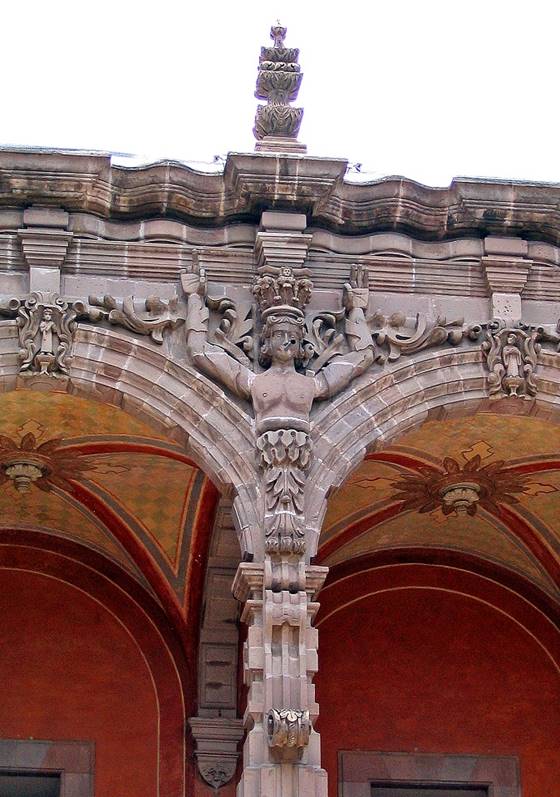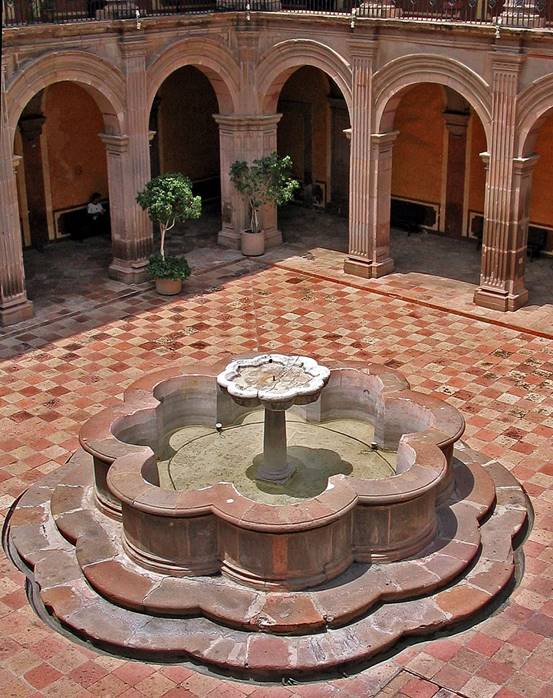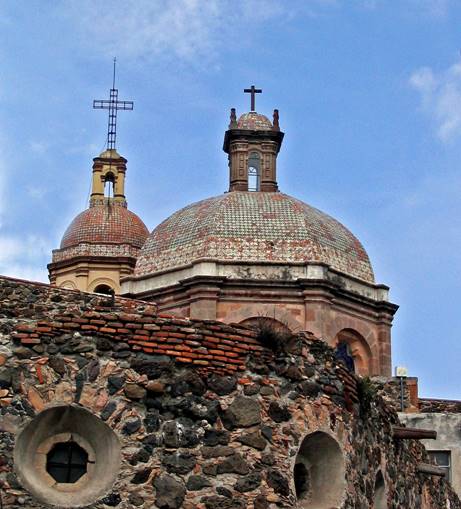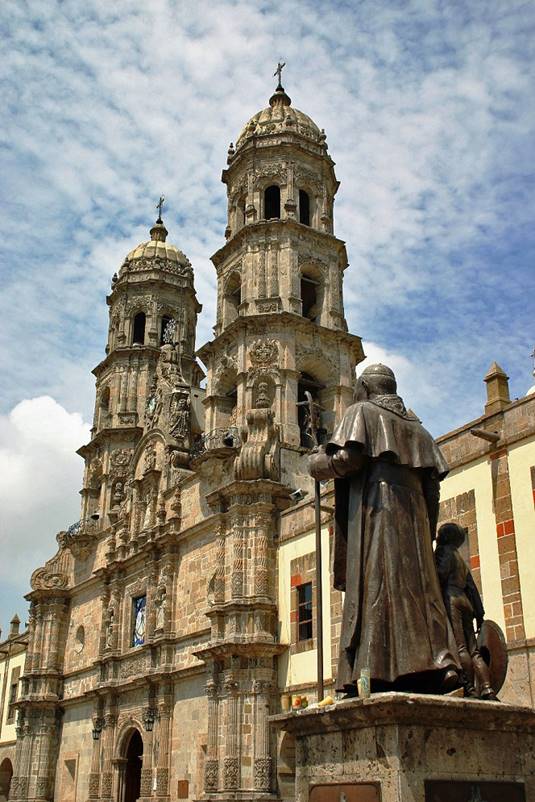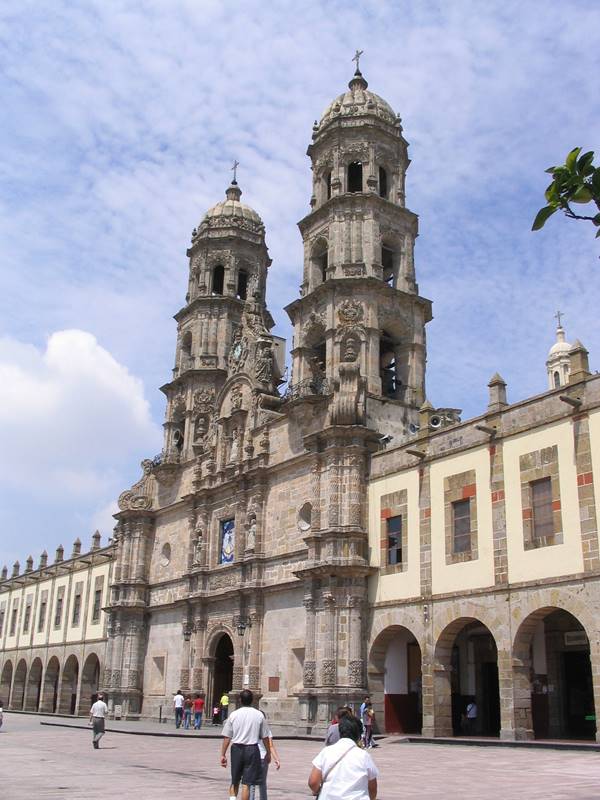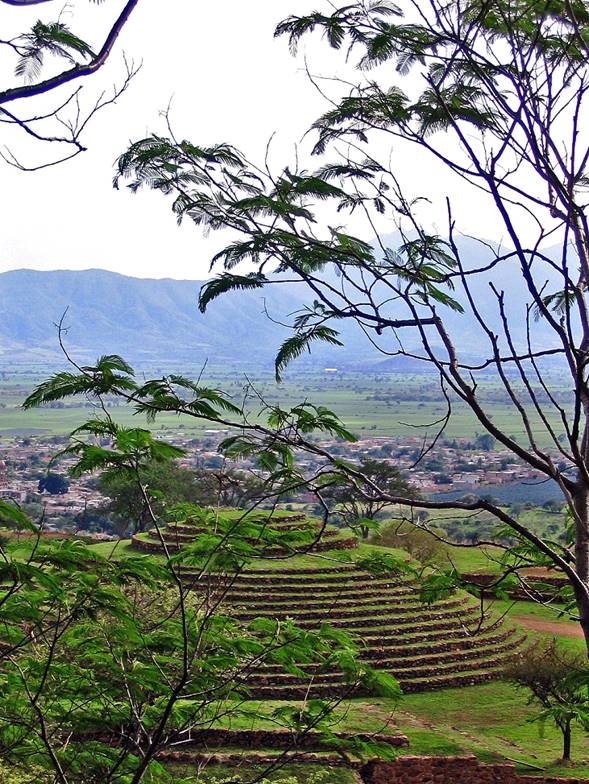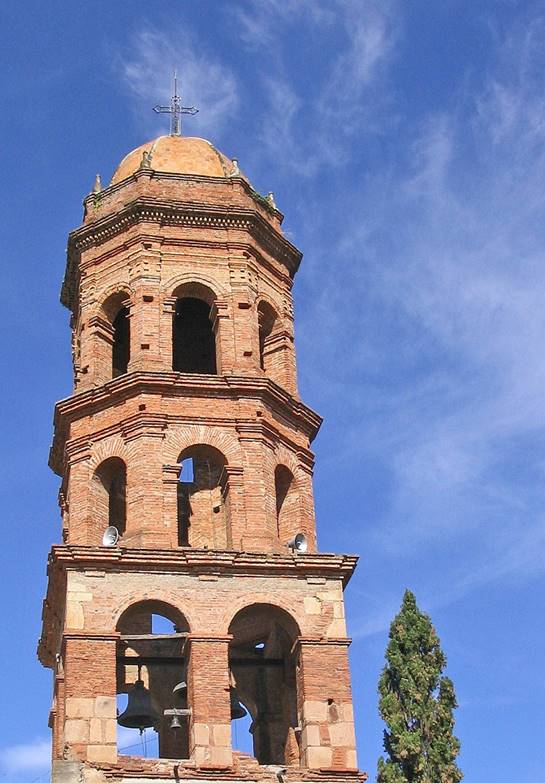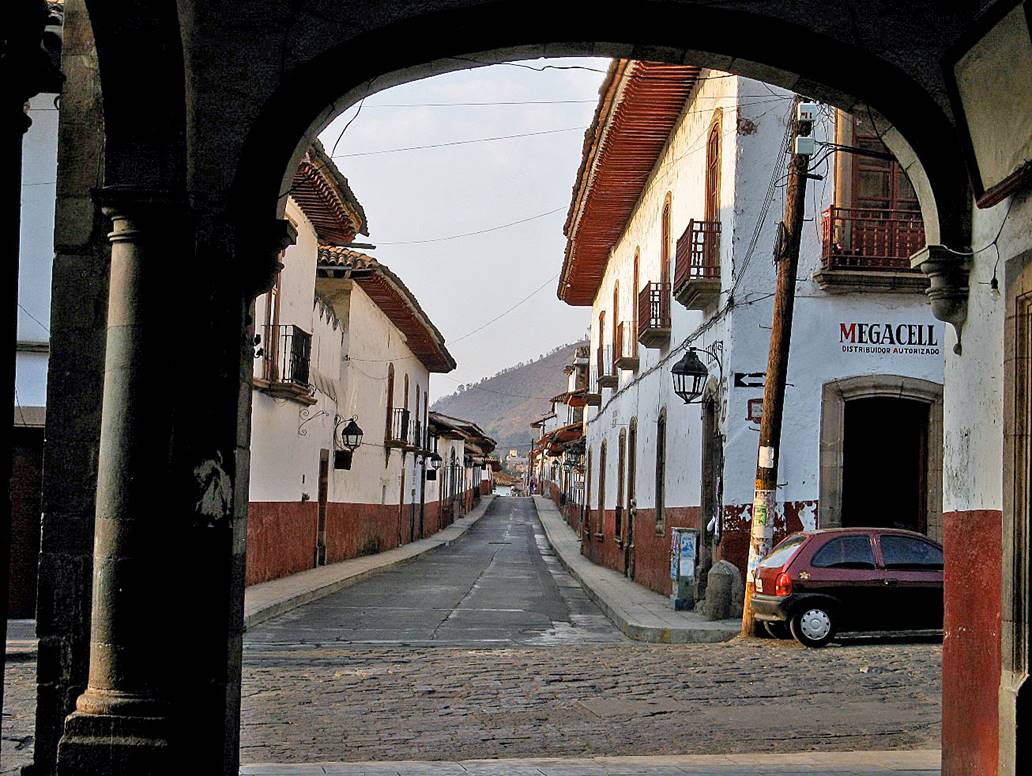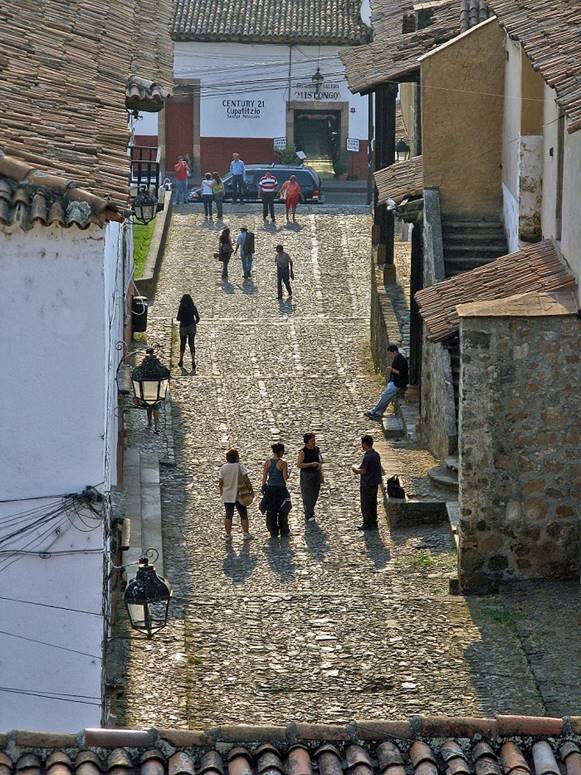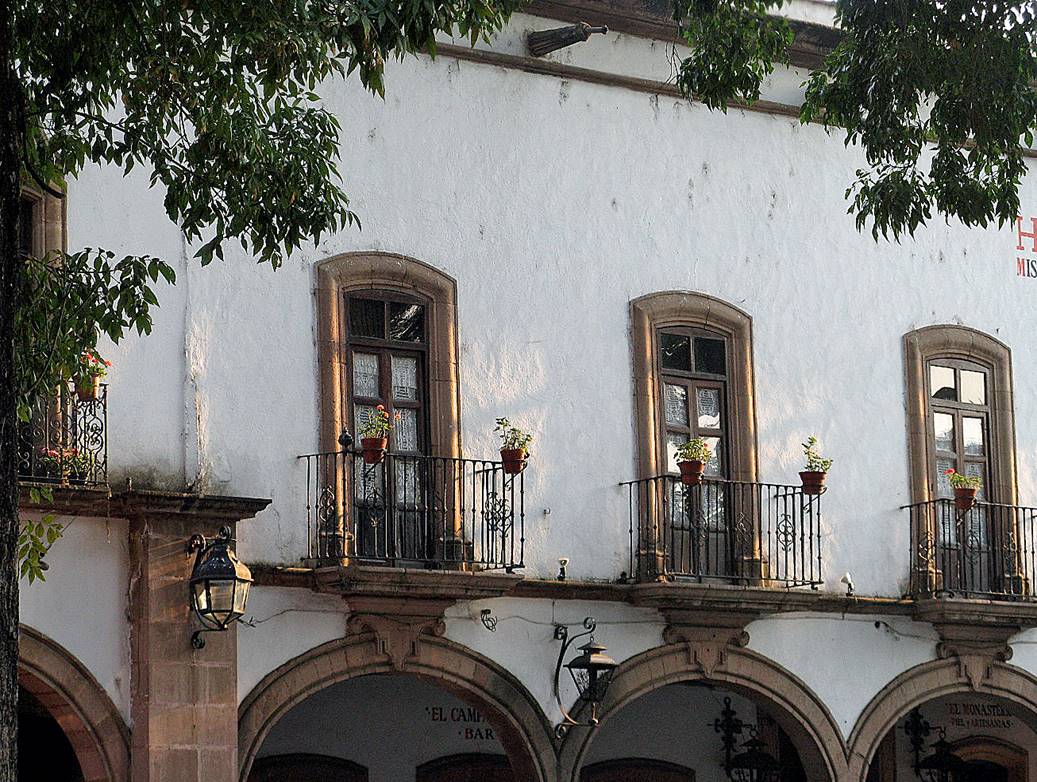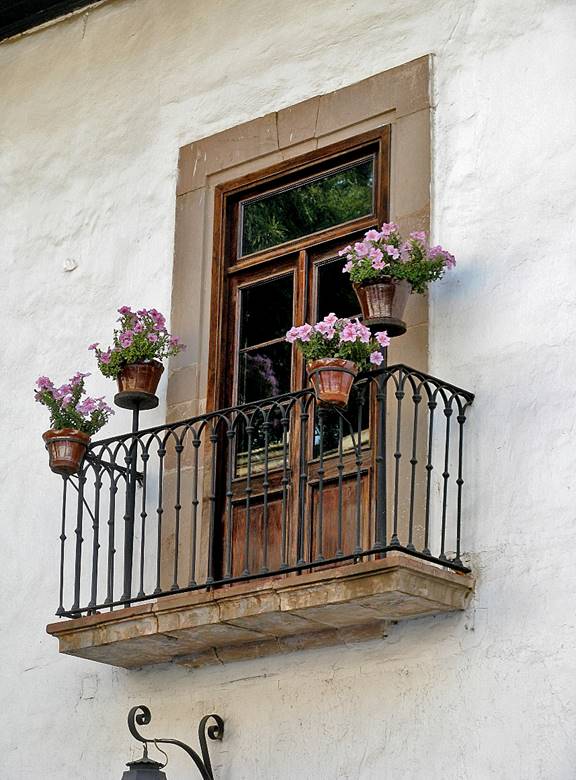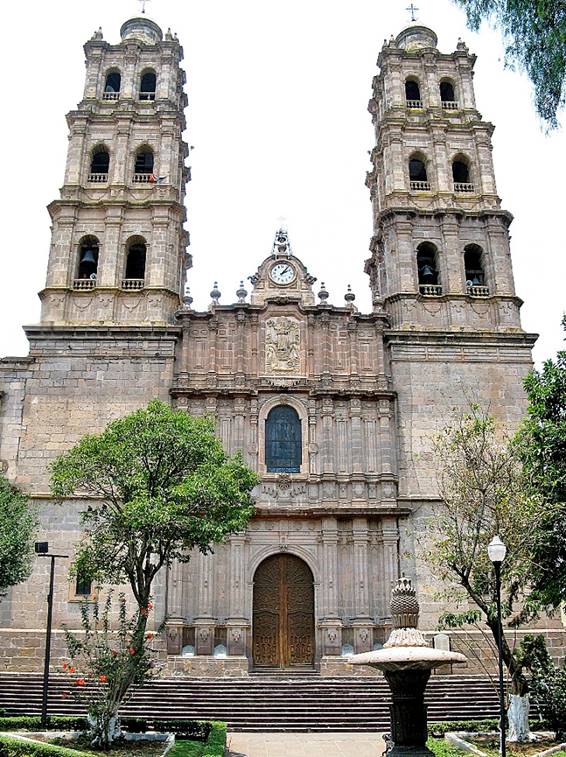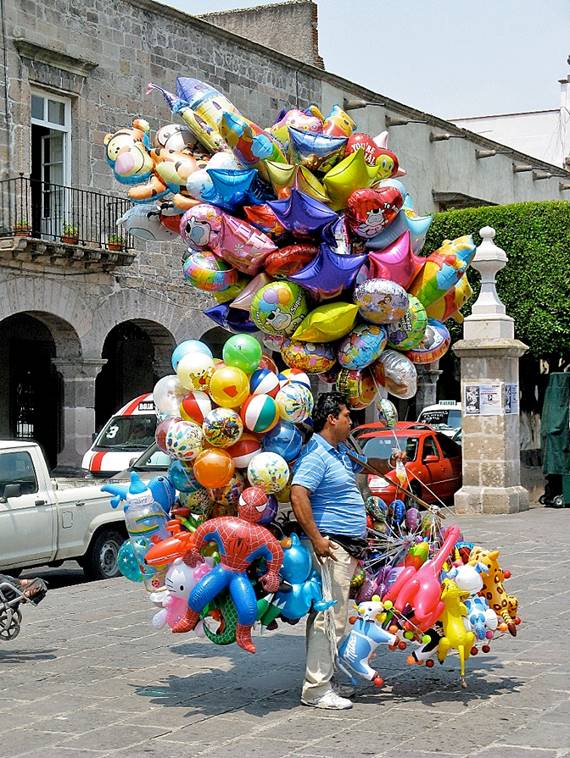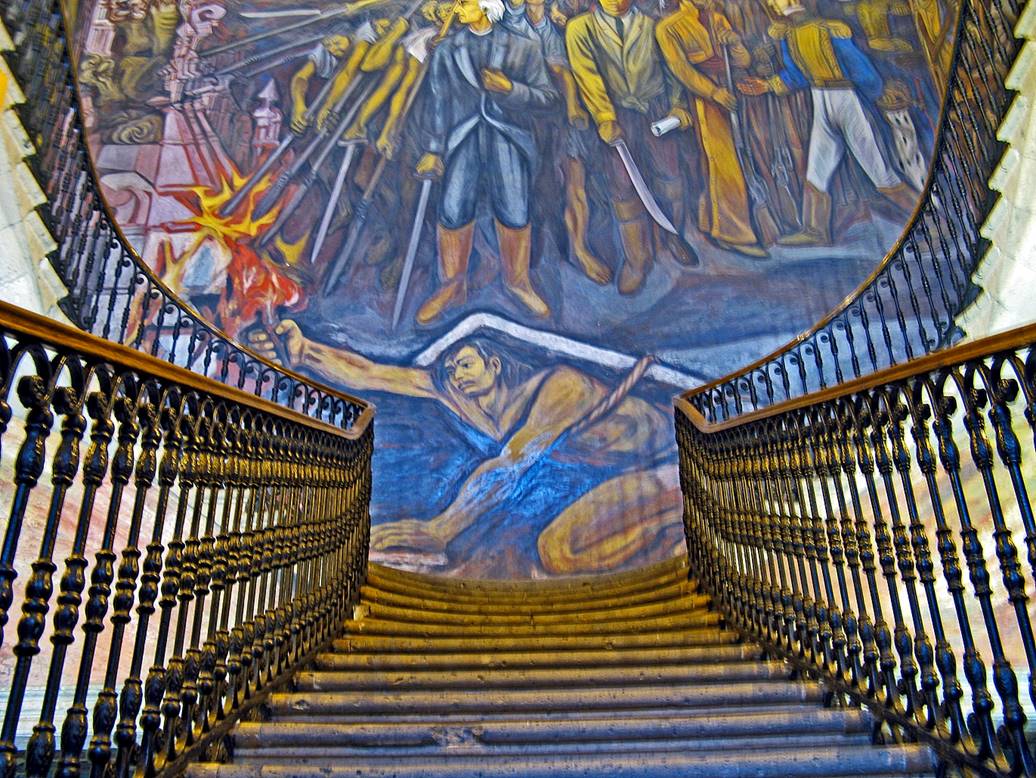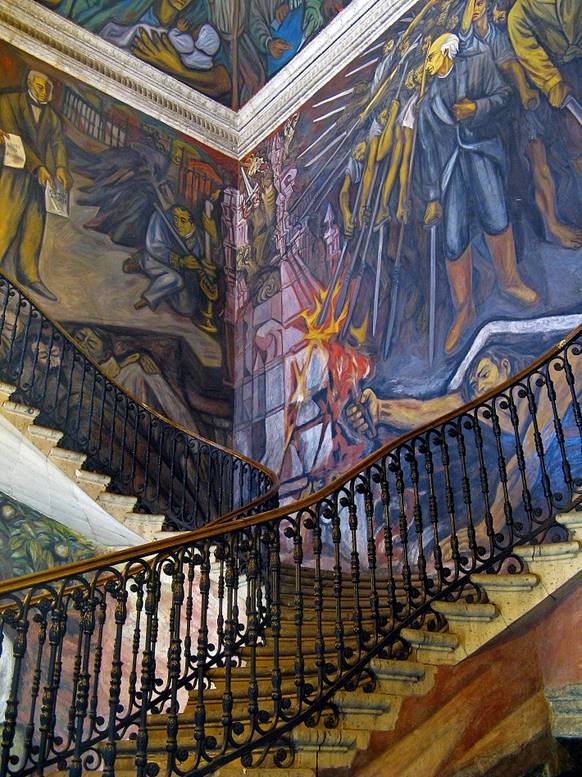Mexico: States of Zacatecas, Guanajuato, Queretaro, Jalisco, Colima, and Michoacan
(2006-2010)

(This banner shows
painted smiling skulls made of papier-mache used to
celebrate El Dia de Los Muertos
in Mexico. This celebration is particularly intense in the State of Michoacan.)
Return
to main Mexico (2002...) page
These western
and central highland states have plenty of spectacular colonial cities, in
particular the silver mining cities of Guanajuato and Zacatecas and the well
preserved town of Patzcuaro in Michoacan.
They do not receive many foreign visitors and they are sufficiently far away
from Mexico City to avoid hordes of tourists on weekends.
(2007) Zacatecas (State of Zacatecas):
Zacatecas is
the capital of the state of Zacatecas.
General views
of the city, with the Catedral Basilica de la
Asuncion de Maria de Zacatecas visible in all three photos.

|
|
|
Detailed carvings in the front facade of
the cathedral.
|
|
|
Some beautiful masks from the collection
on display in Museo Rafael Coronel.
|
|
|
|
|
|
|
|
|
Reproduction of old scenes of Mexico
with marionettes in Museo Rafael Coronel.
|
|
|
The ruins of the ex-Convento
de San Francisco (16th century), in which the Museo
Rafael Coronel is located.
|
|
|
|
The Plaza de Toros
San Pedro (inaugurated in 1866) and the El Cubo aqueduct
behind it. The last bullfight occurred in 1975. Today the arena is the central
patio of a hotel built in 1989. The 18th-century aqueduct has been in use until
1910.
|
|
|
(2007, 2008, 2010)
Guanajuato (State of Guanajuato):
Guanajuato is the capital of the state
of Guanajuato.
The 17th-century Catedral
Basilica Nuestra Senora de Guanajuato (yellow) and
the 18th-century university (gray/white building behind the cathedral).

Front facade of the cathedral.
|
|
|
Other views of the colorful town.







Calle Potrero, during
the day and at night.


Narrow streets.
|
|
|
|
|
Yet another street.

Statue of El Pipila,
Guanajuato′s hero, seen from el Jardin de la
Union, with Templo de San Diego partially visible in
the forefront.

Closer view of the statue of El Pipila.

From left to right: Teatro
Juarez, El Pipila, and Templo
de San Diego.

Top of the facade of Teatro Juarez, with bronze
sculptures representing Muses of the Greek mythology.

Left: Templo San Francisco. Right:
Templo de la Valenciana.
|
|
|
Romantic dancing on Plaza San Fernando.
|
|
|
Mina de Guadalupe.
|
|
|
Statues of Sancho Panza and Don Quixote. (Each
fall Guanajuato hosts the Festival Internacional Cervantino.)

(2007, 2010) San Miguel de Allende (State of Guanajuato):
Cathedral.

|
|
|
|

|
|
|
Balloon vendors on Plaza de Armas.

Streets and
dangerously steep access ramp for wheelchairs.
|
|
|
|
|
|
(2007) Queretaro
(State of Queretaro):
Queretaro is
the capital of the state of Queretaro. It is an industrial city with a
beautiful colonial center.
The aqueduct.
It was completed in 1736 to bring spring water to the growing city. It is 1280m
long and consists of 74 arches, some 23m high. It is no longer in use.
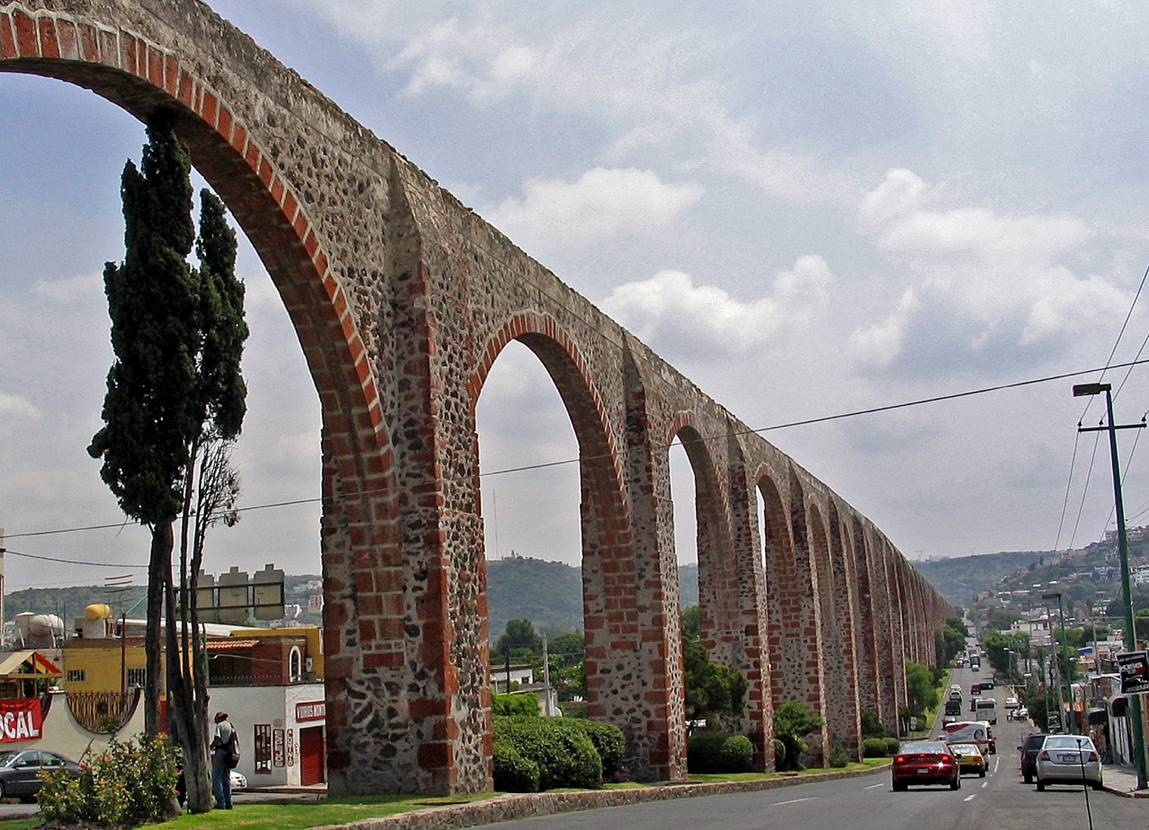
In the
cloister of the baroque former Convente de San
Augustin (now the Museo de Arte).
|
|
|
In the
cloister of former Convente de San Francisco (now the
Museo Regional). The dome of the adjacent Templo de San Francisco is visible in the photo on the
right.
|
|
|
|
Domes of Templo y Convento de la Santa Cruz.
|
|
|
(2006, 2008)
Guadalajara (State of Jalisco):
Guadalajara is the capital of the state
of Jalisco.
Two of the Murales
de la Revolucion Universal painted by Guadalajara
artist Guillermo Chavez Vega in 1970, in Municipal Palace of Zapopan: Socialist
Revolution (first photo) and French revolution (second photo).
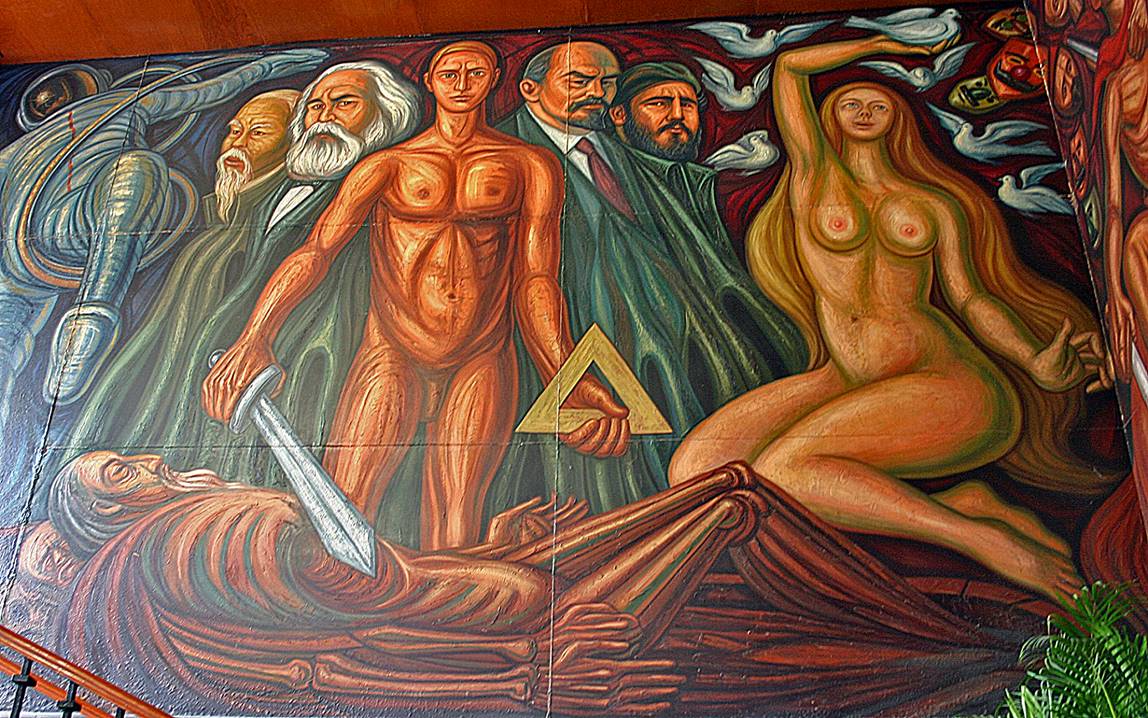

Portion of a mural painting (by Jose Clemente
Orozco, 1883-1949) in the Jalisco Palacio de Gobierno.
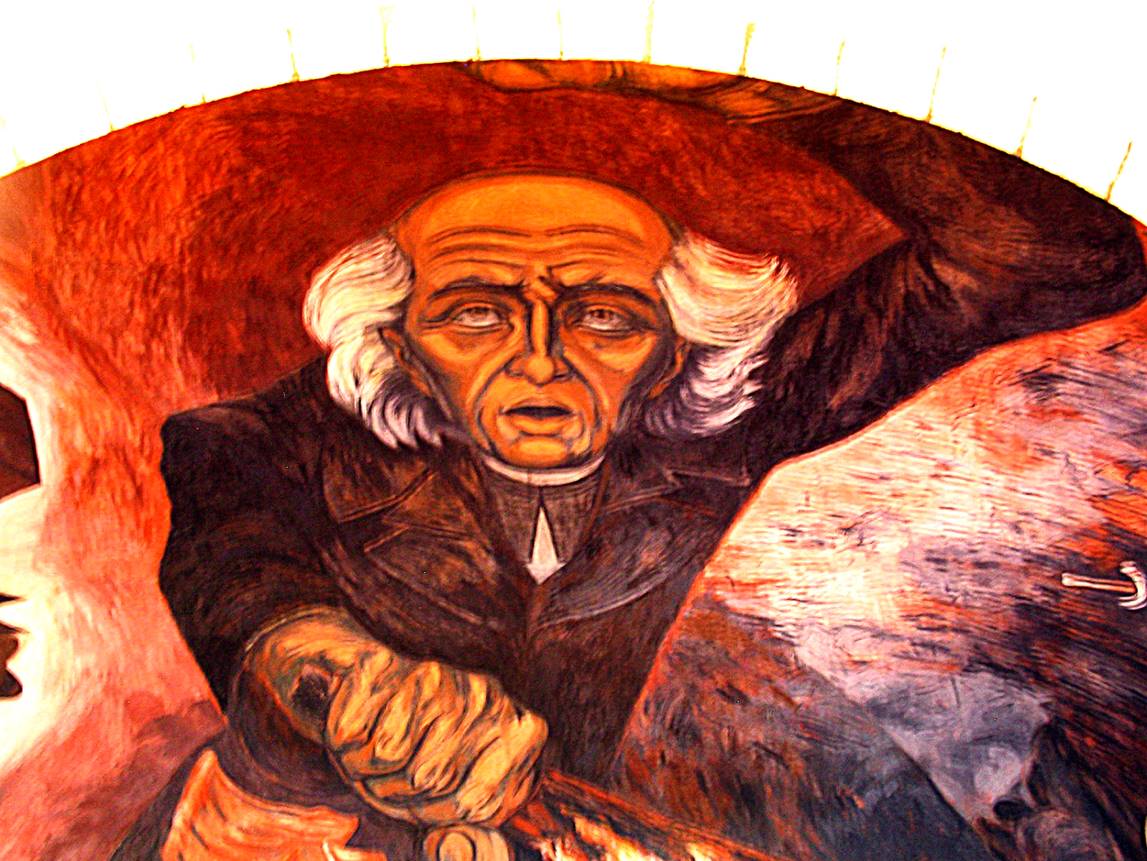
Basilica de Zapopan.

|
|
|
Religious
figurines for sale in a market.
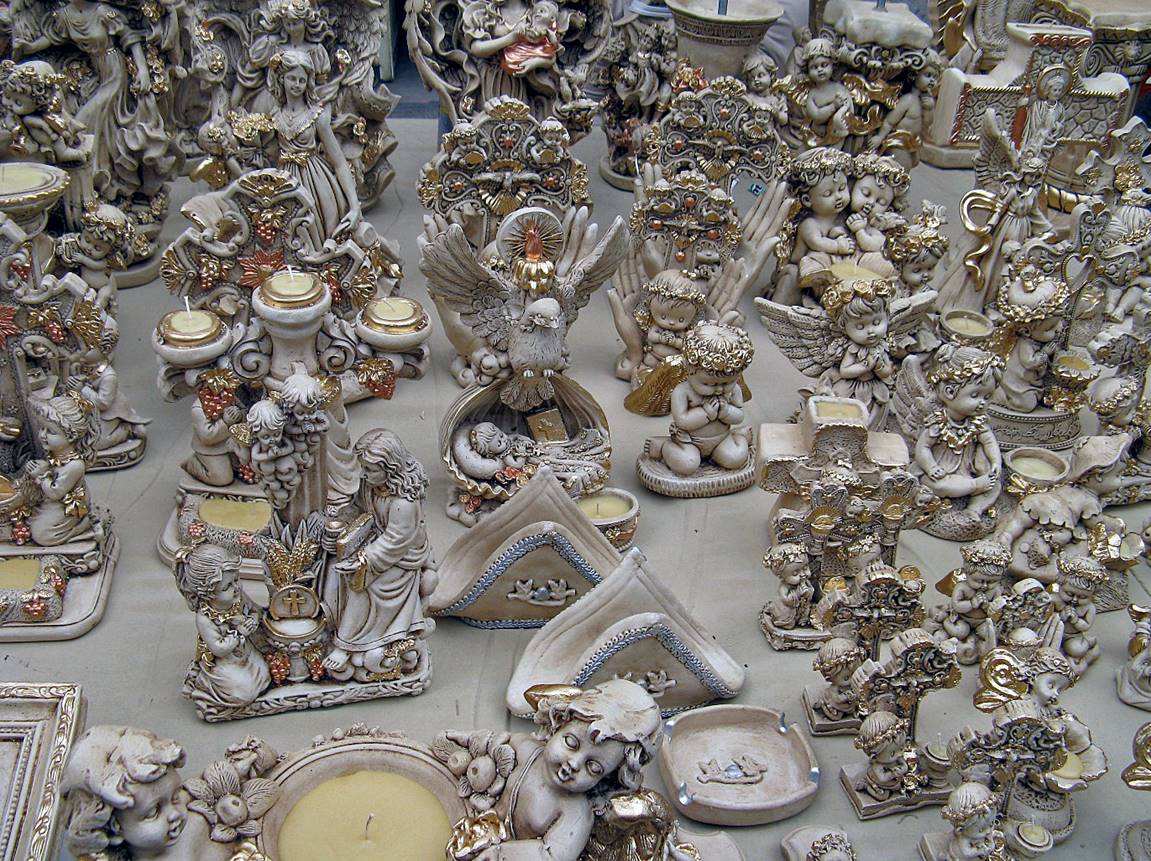
Other
figurines in the same market.
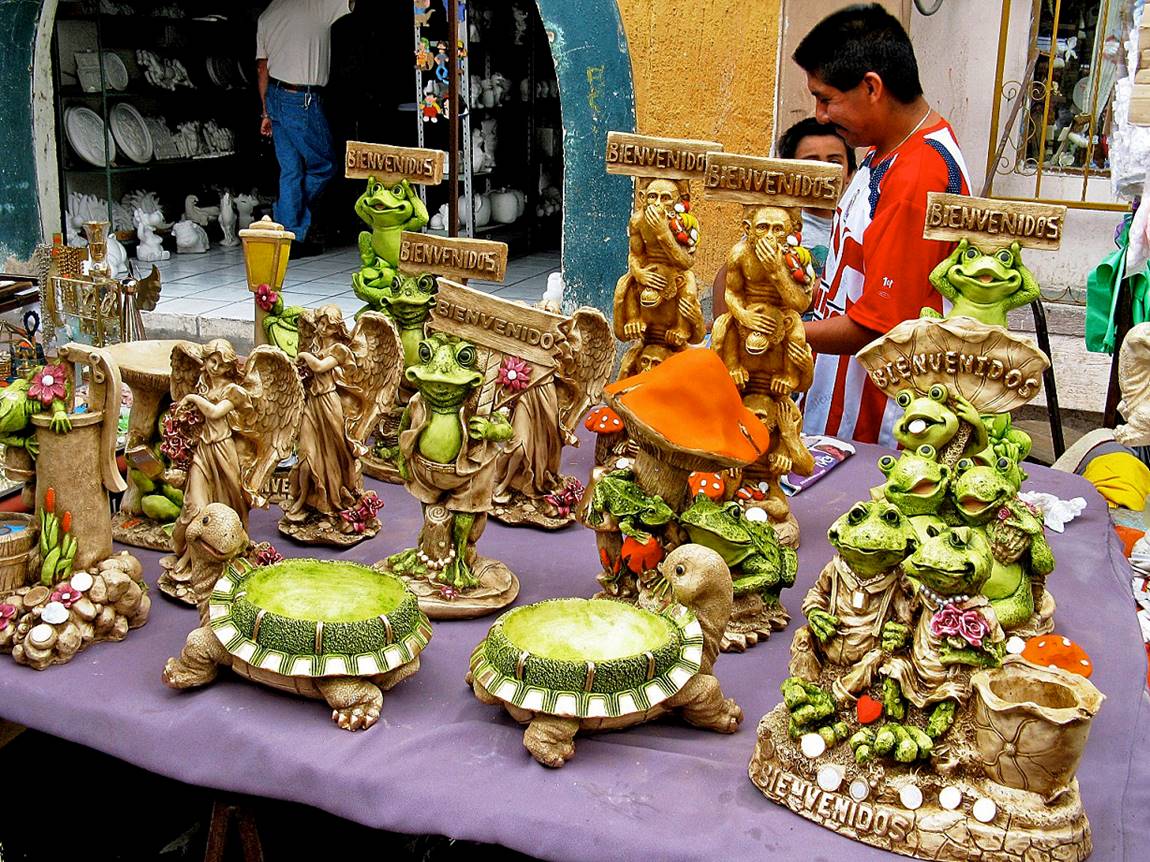
Street food.
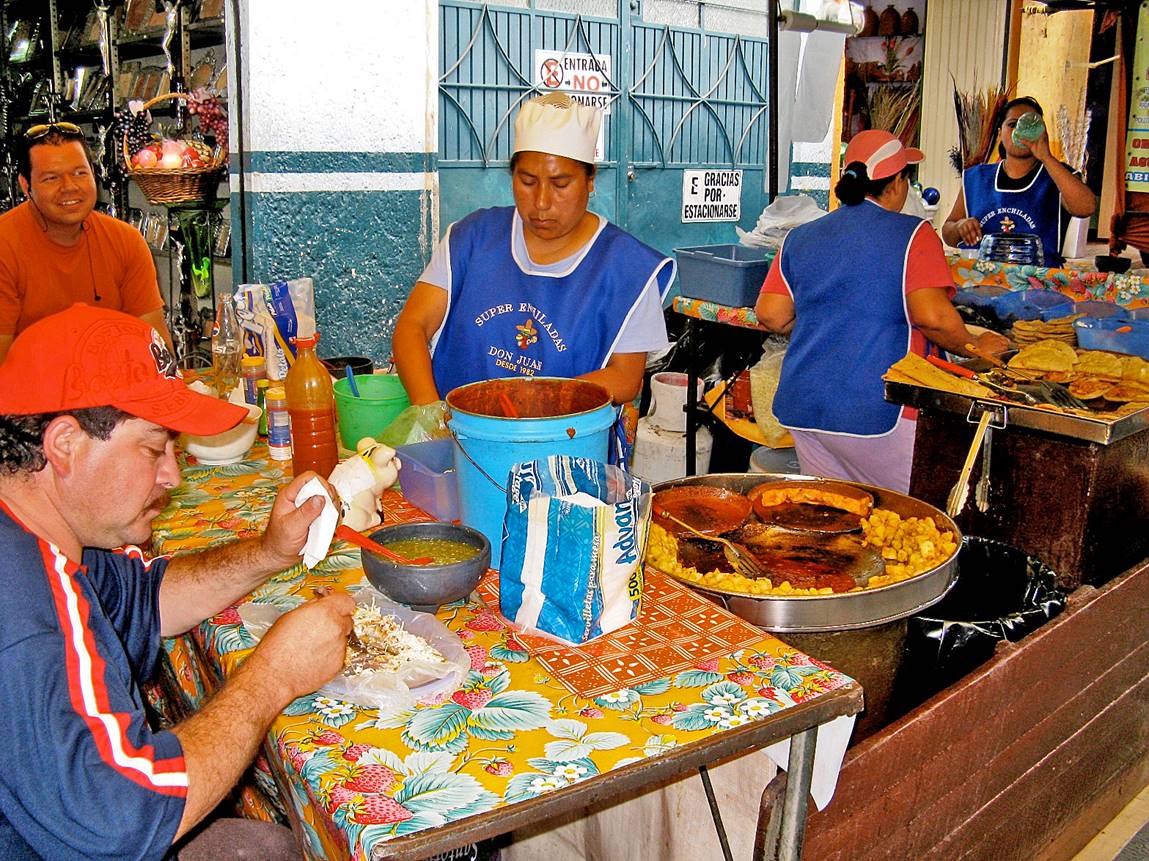
(2006) Guachimontones and Teuchitlan
(State of Jalisco):
Circular stepped
pyramid in prehispanic archeological site (Guachimontones) and church tower in nearby village (Teuchitlan).

|
|
|
(2008) Ciudad Guzman (State of Jalisco):
Sagrado Corazon church.
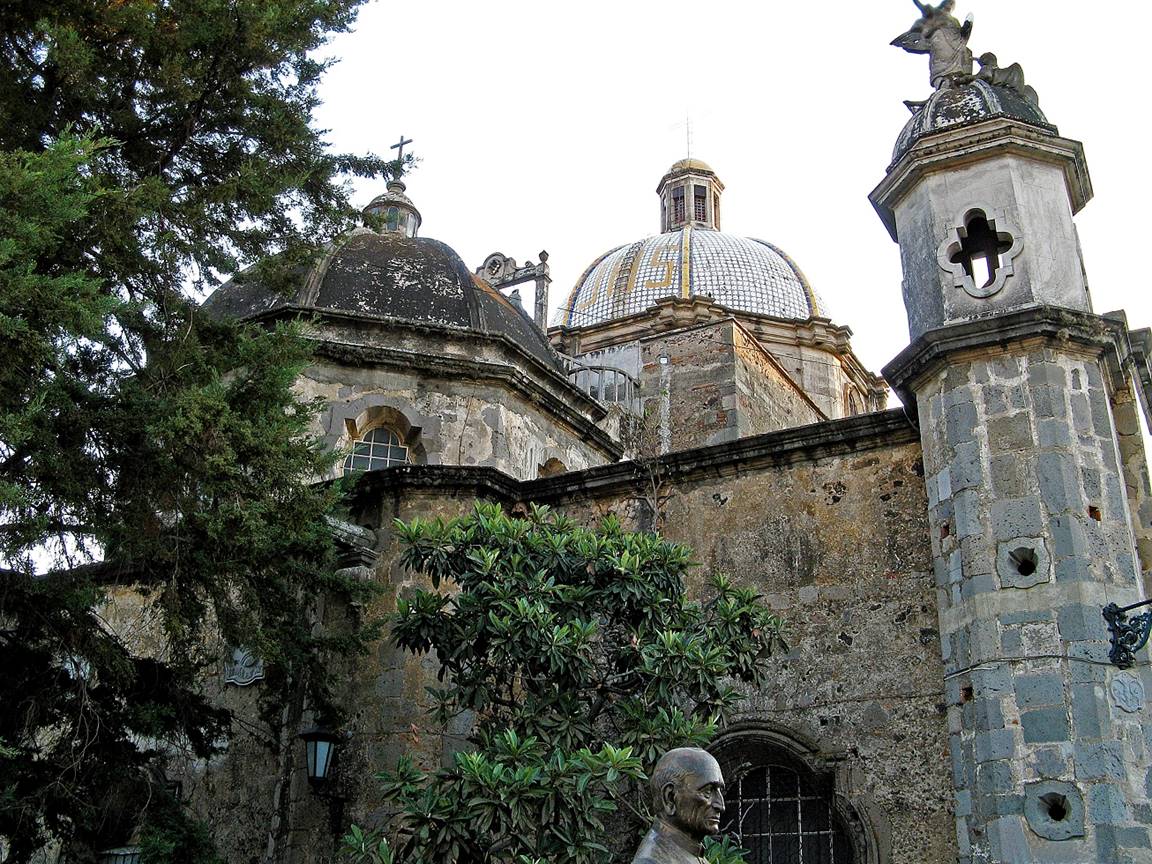
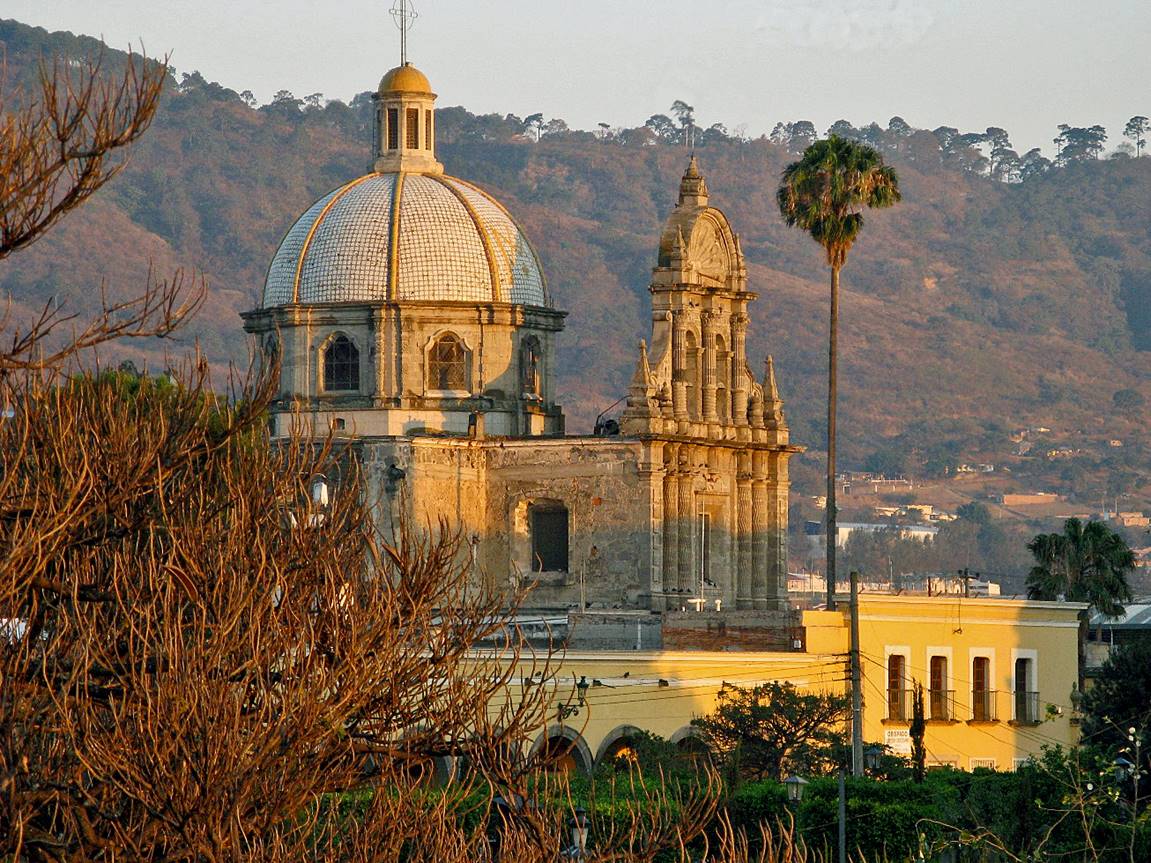
Plaza and arcades.
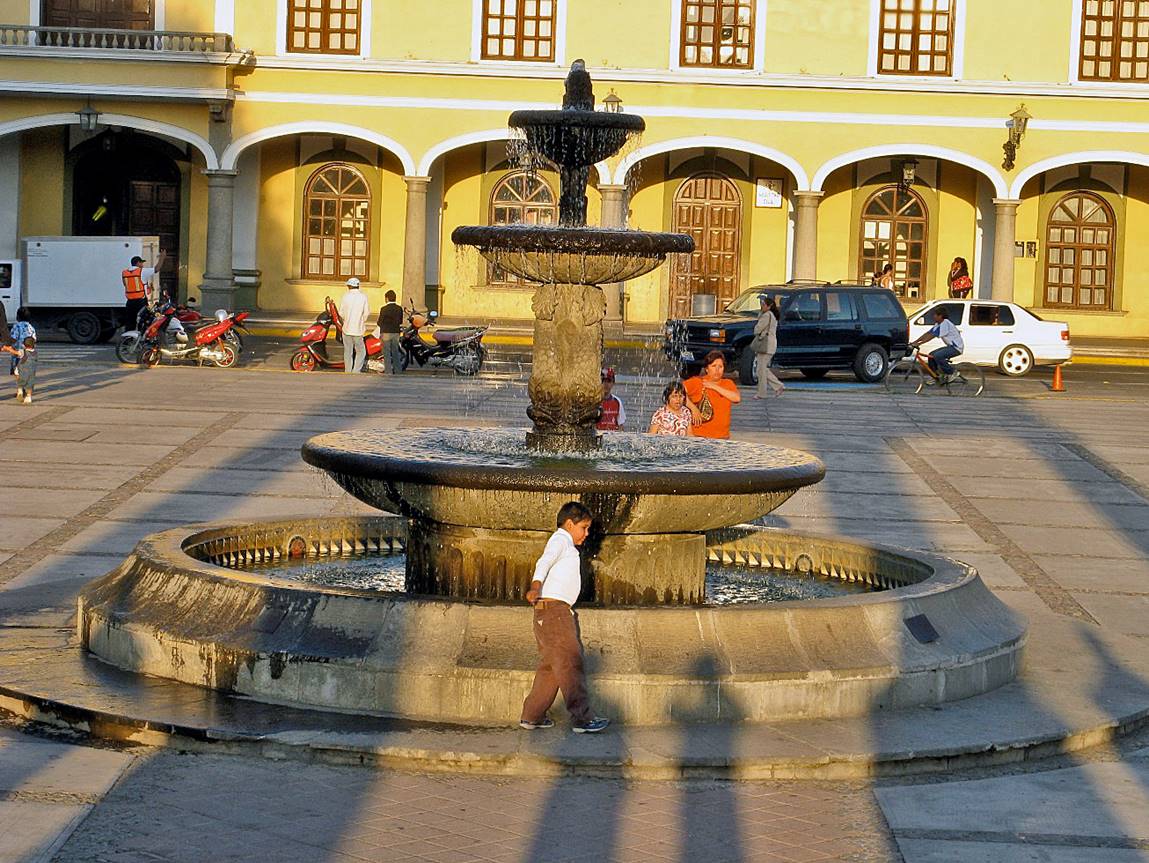
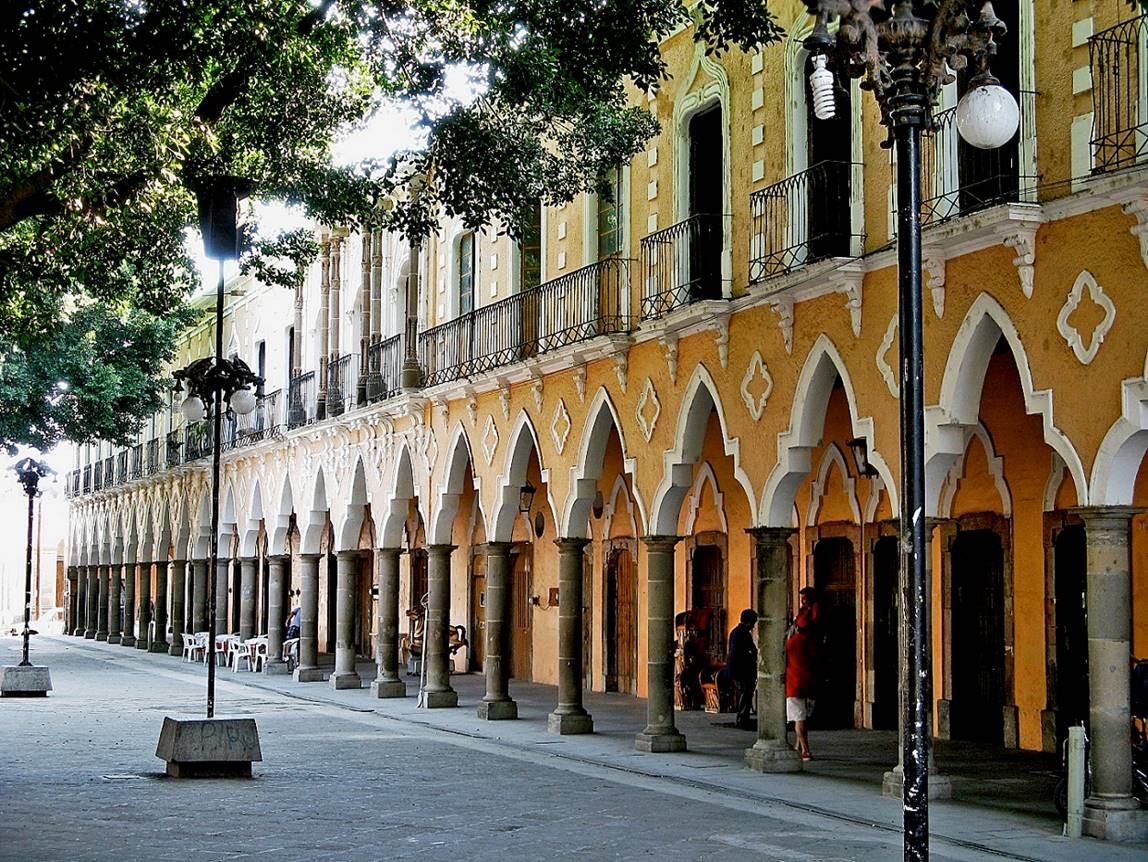
Reproduction of the mural ″Hombre en Llamas″ (″Man on Fire″) of Jose Clemente
Orozco in a kiosk. (The original painting is located in the Instituto Cultural Cabanas in Guadalaraja.
But Orozco was born in Zapotlan el Grande,
now Ciudad Guzman, and this mural is considered his greatest.)
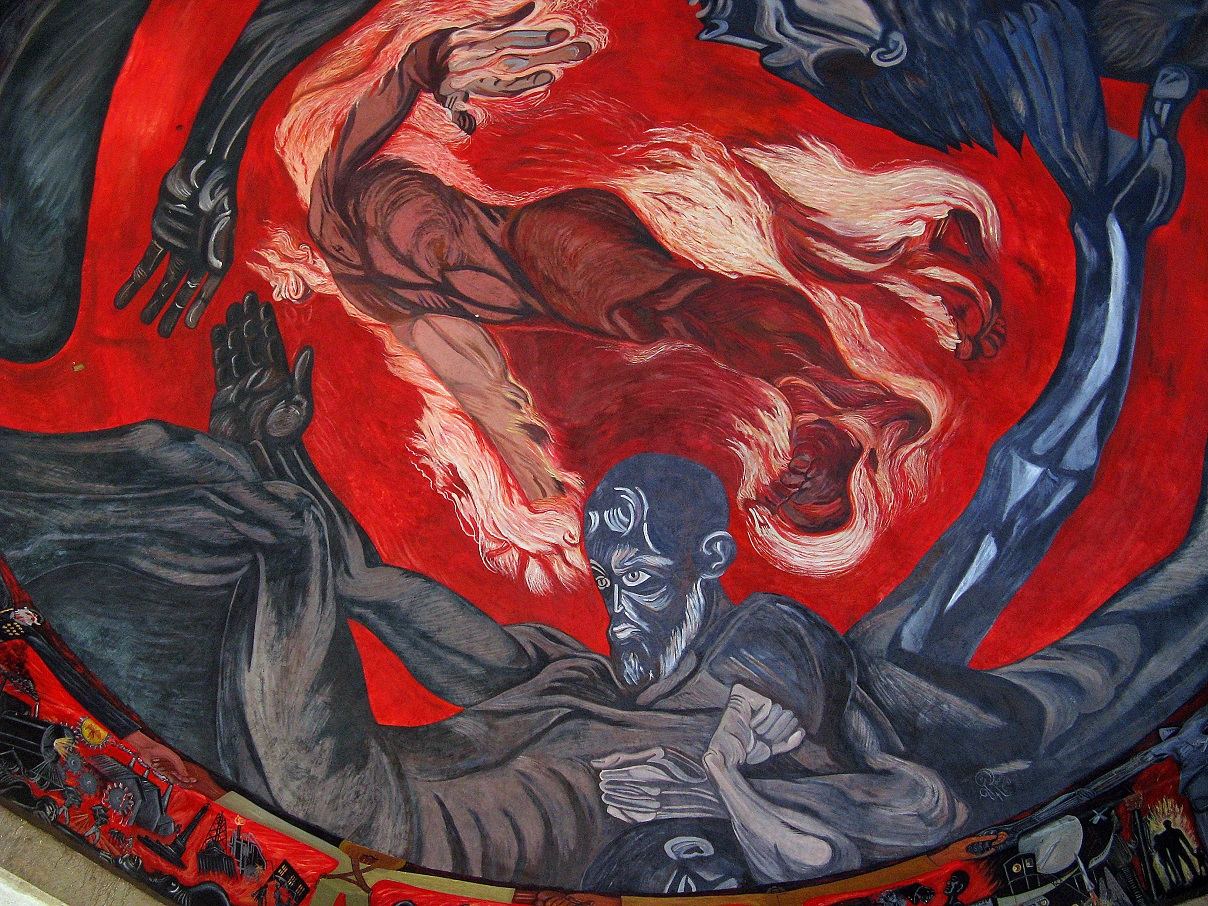
Countryside
between Ciudad Guzman and Volcan Nevado
de Colima.
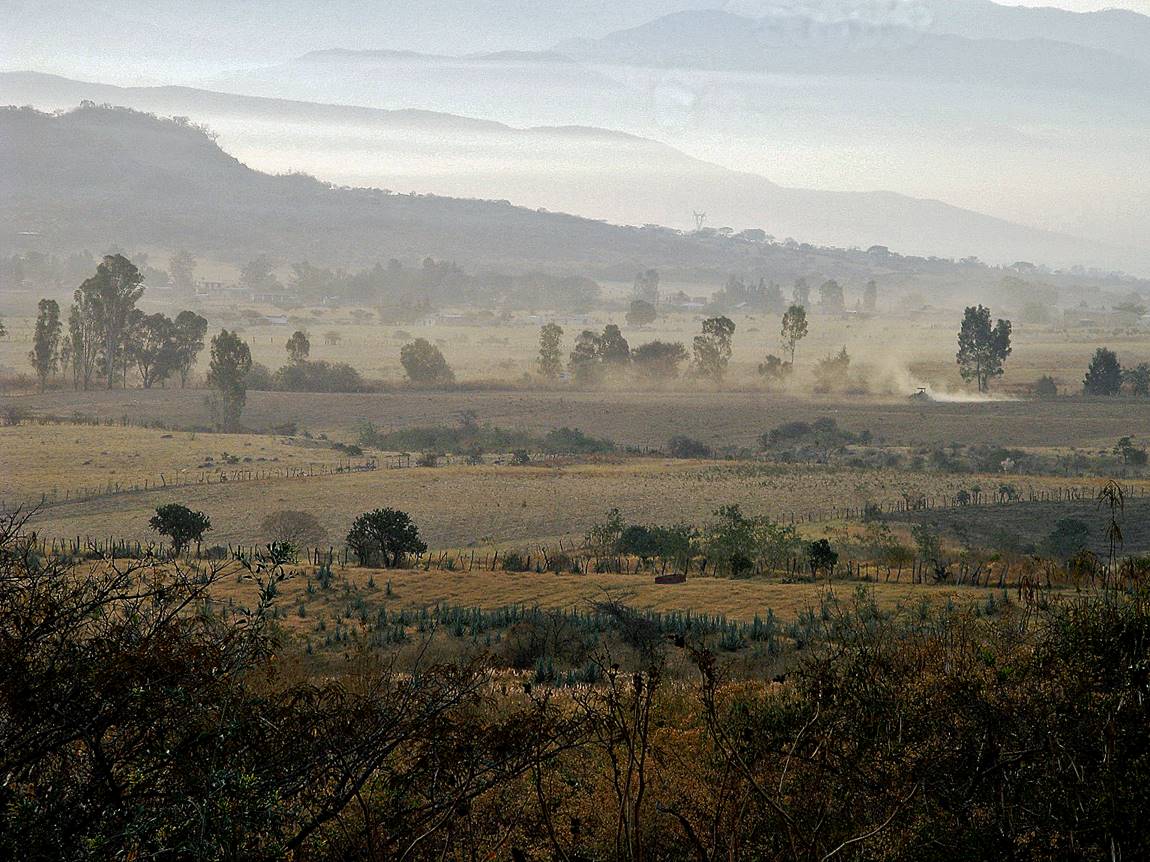
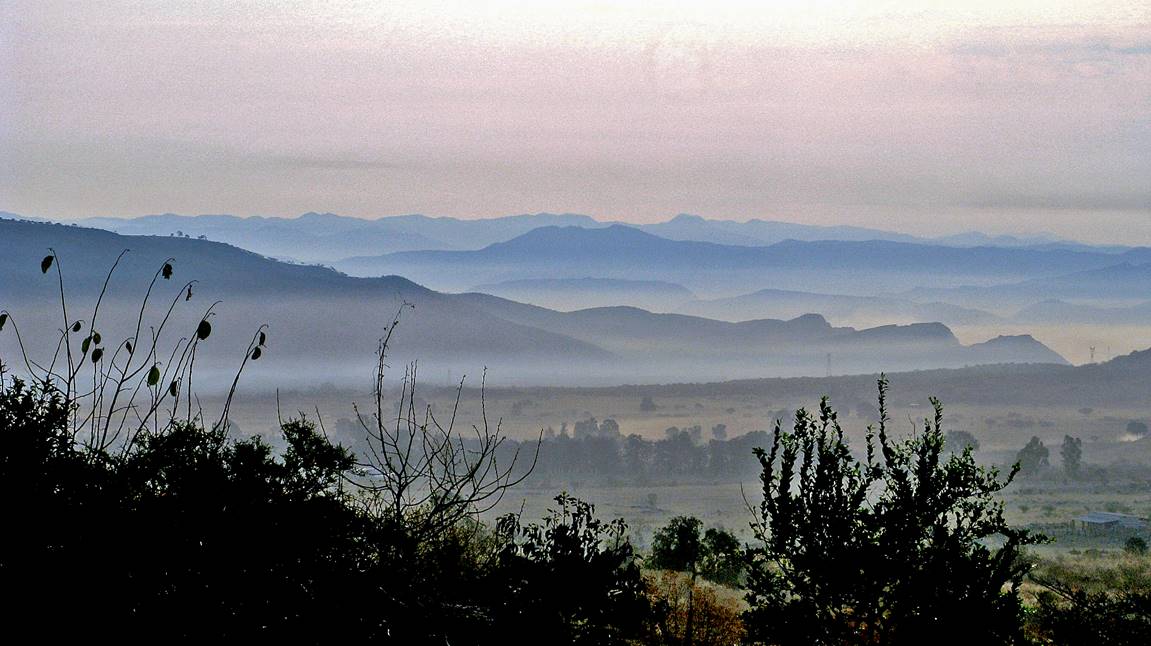
(2008) Volcan de Fuego (State of Colima):
View from Volcan Nevado de Colima (4240m). Volcan de
Fuego (3820m) is one of Mexico′s most active volcanoes. Both volcanoes
are close to Ciudad Guzman.
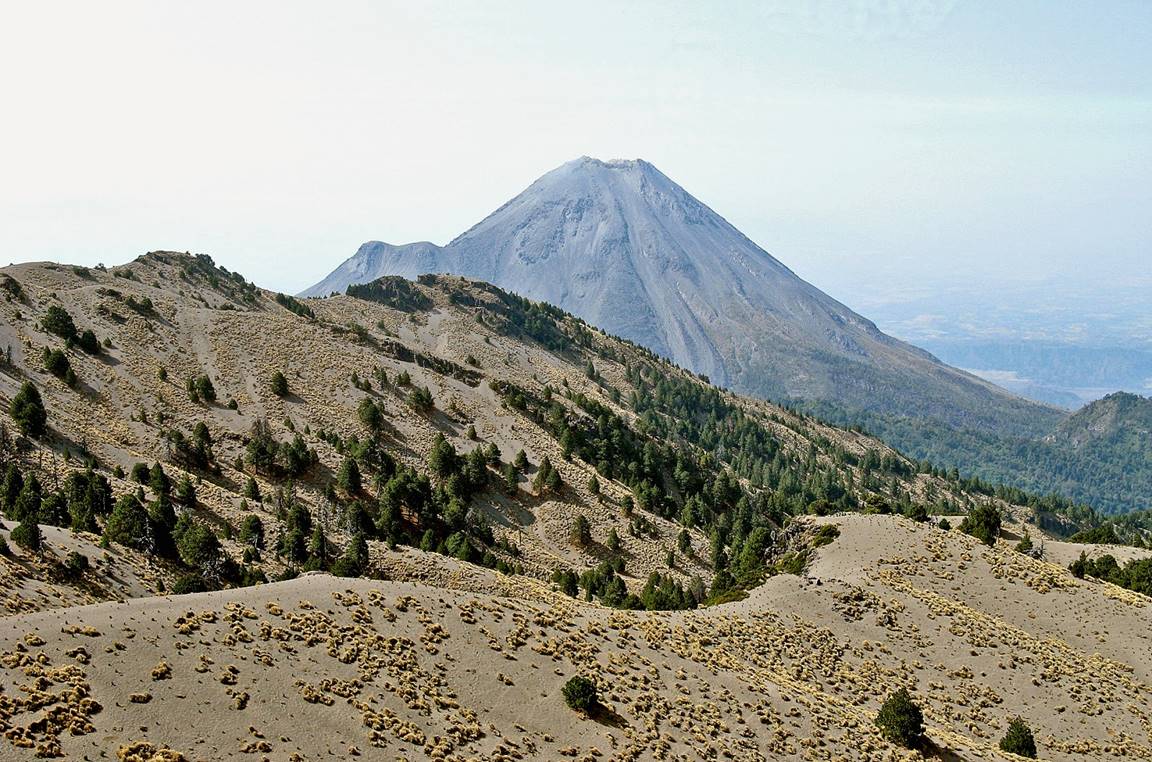
(2008) Patzcuaro (State of Michoacan):
A beautiful colonial city with cobbled
streets, tiled roofs, white-brown buildings, and old churches.
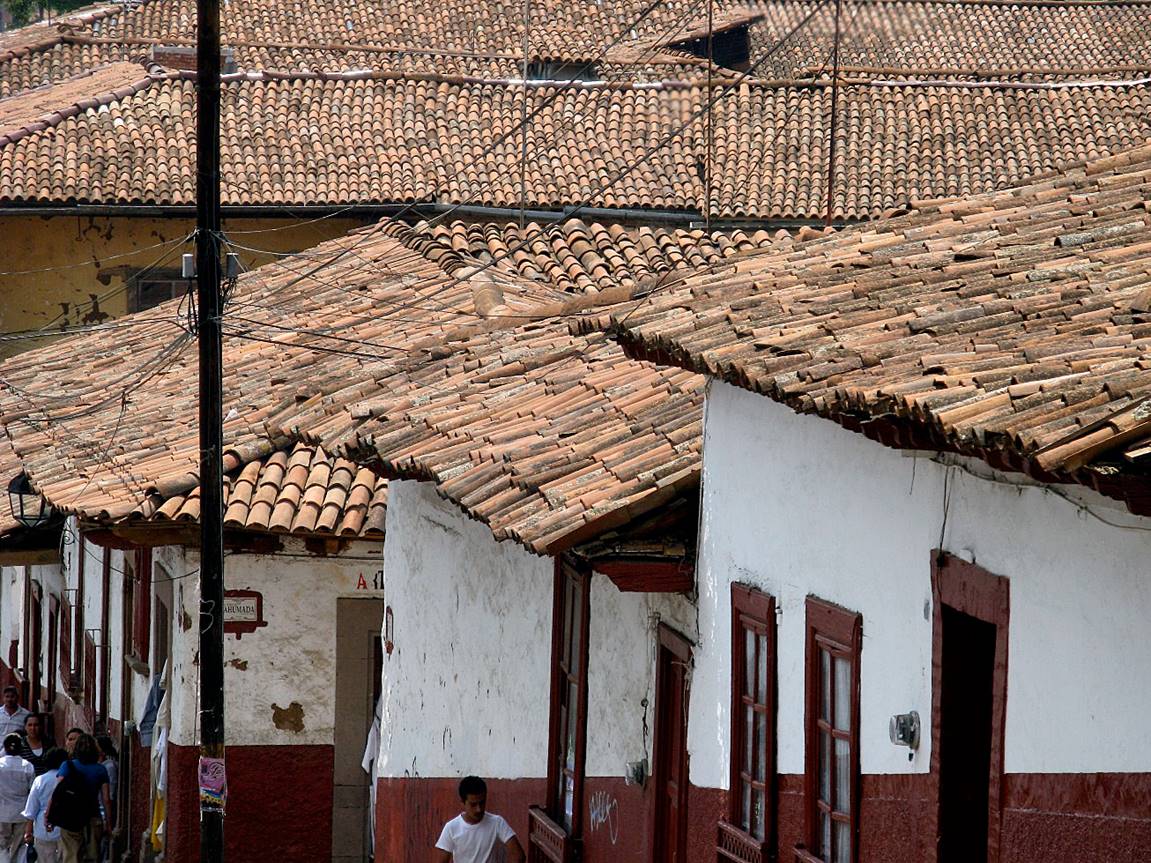
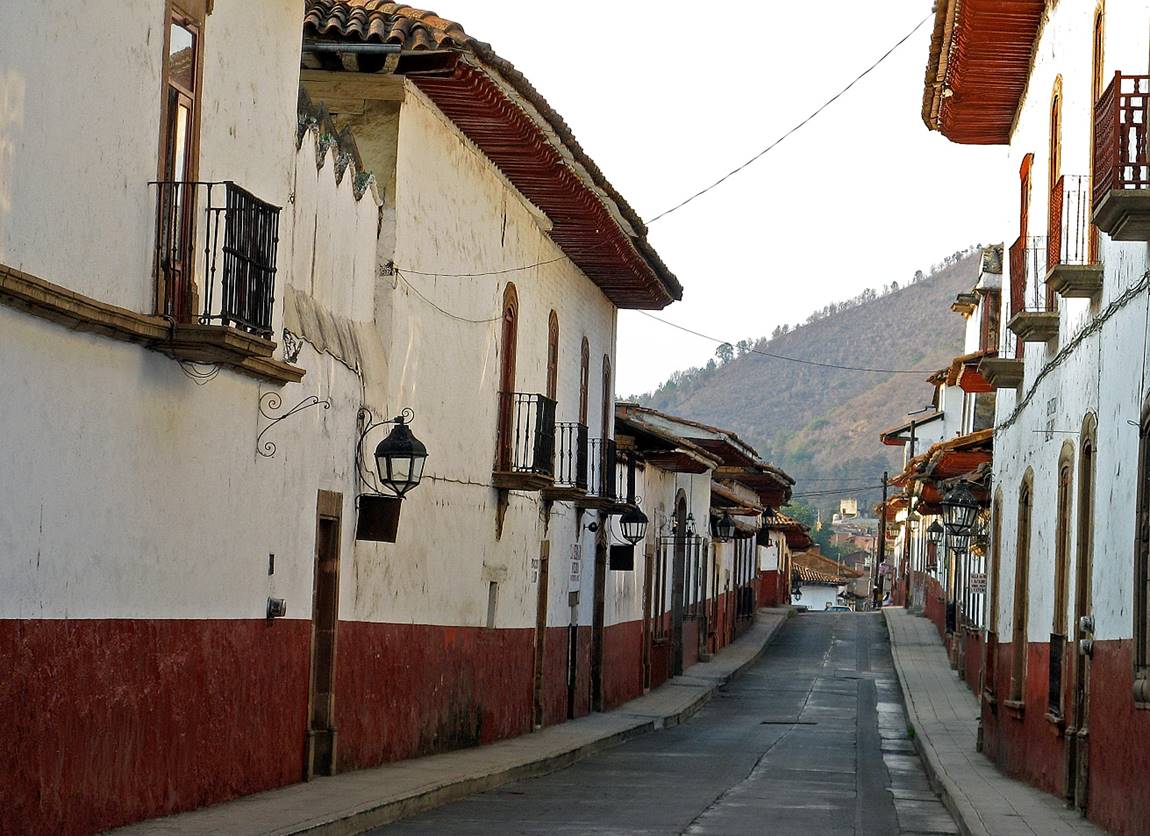
|
|
|
|
|
|
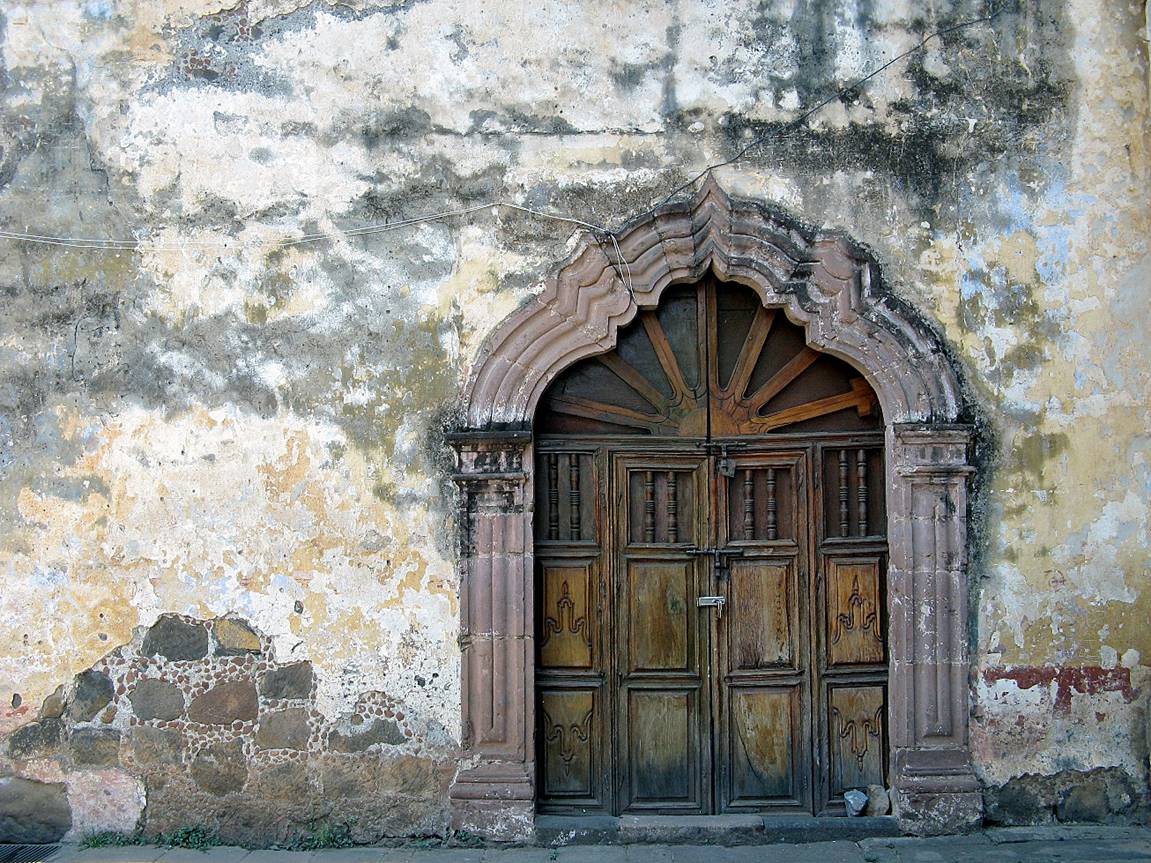
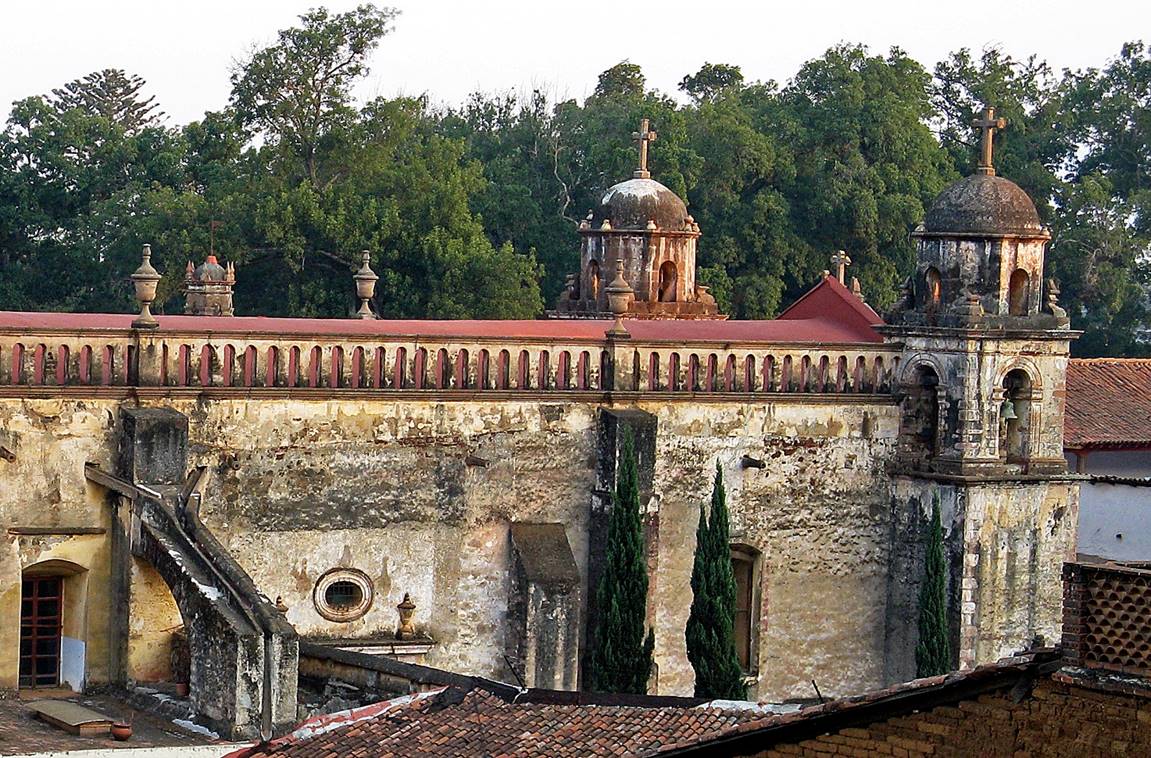
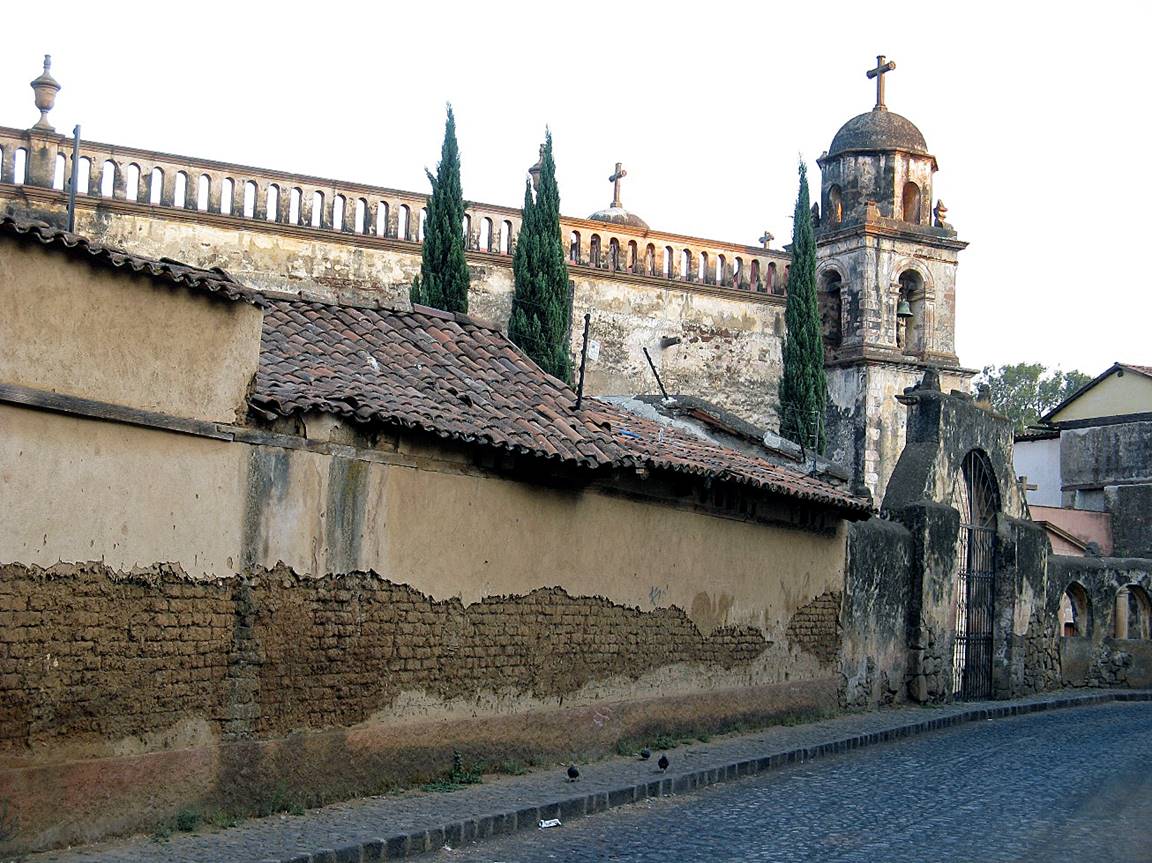
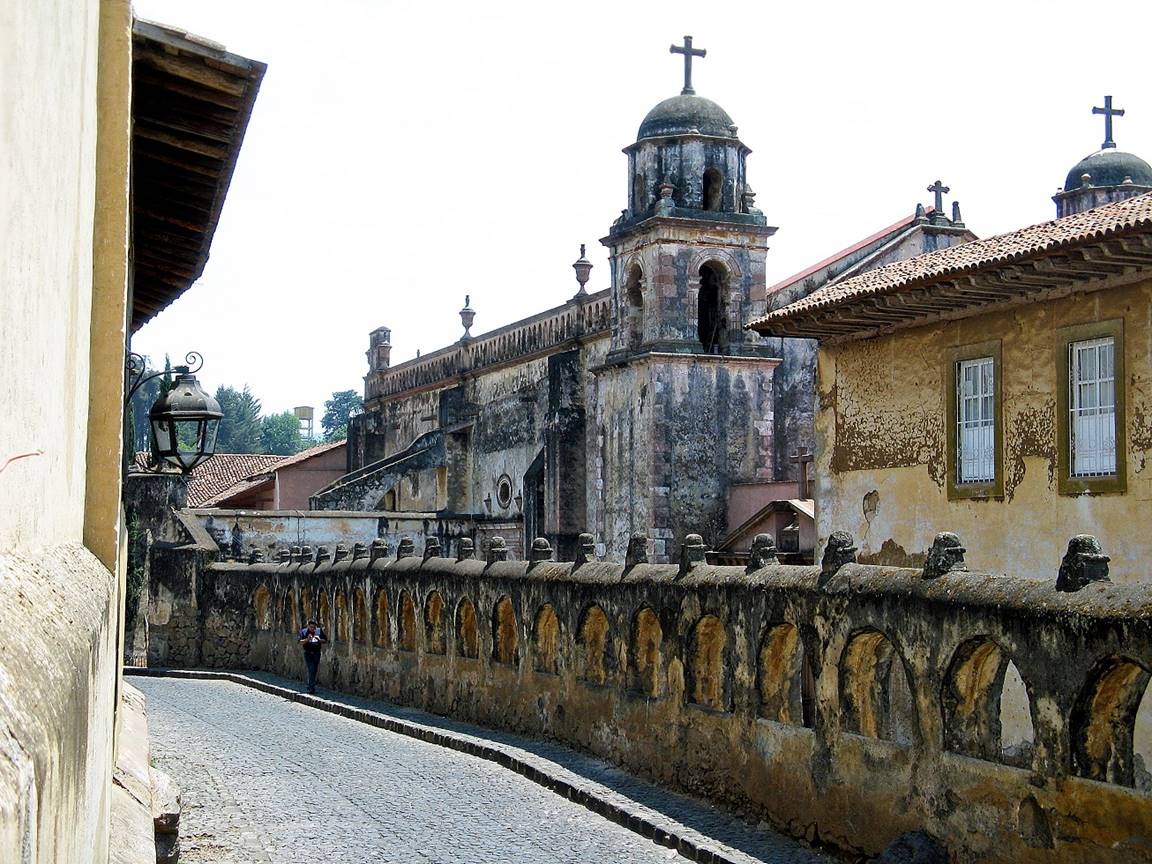
Men relaxing on Plaza Grande de Vasco
de Quiroga.
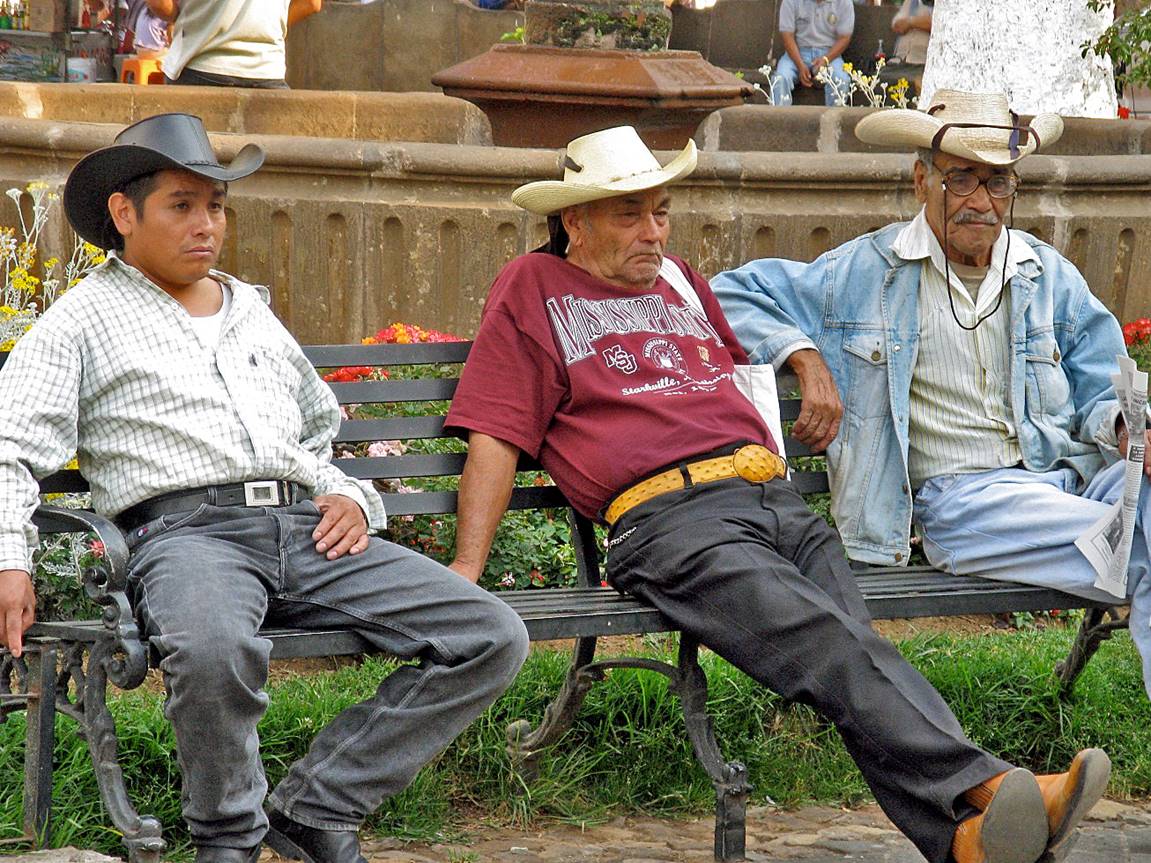
Danza
de los Viejitos (Old Men′s Dance) on Plaza Grande de Vasco de Quiroga, a piece
of traditional indigenous Purepecha music. The performance has a humorous flavor,
as the dancers stage the pains of old age while
showing a youthful vitality adapted to the rhythm of music. [Side note: The Purepecha
language is spoken by about 200,000 people in Michoacan.]
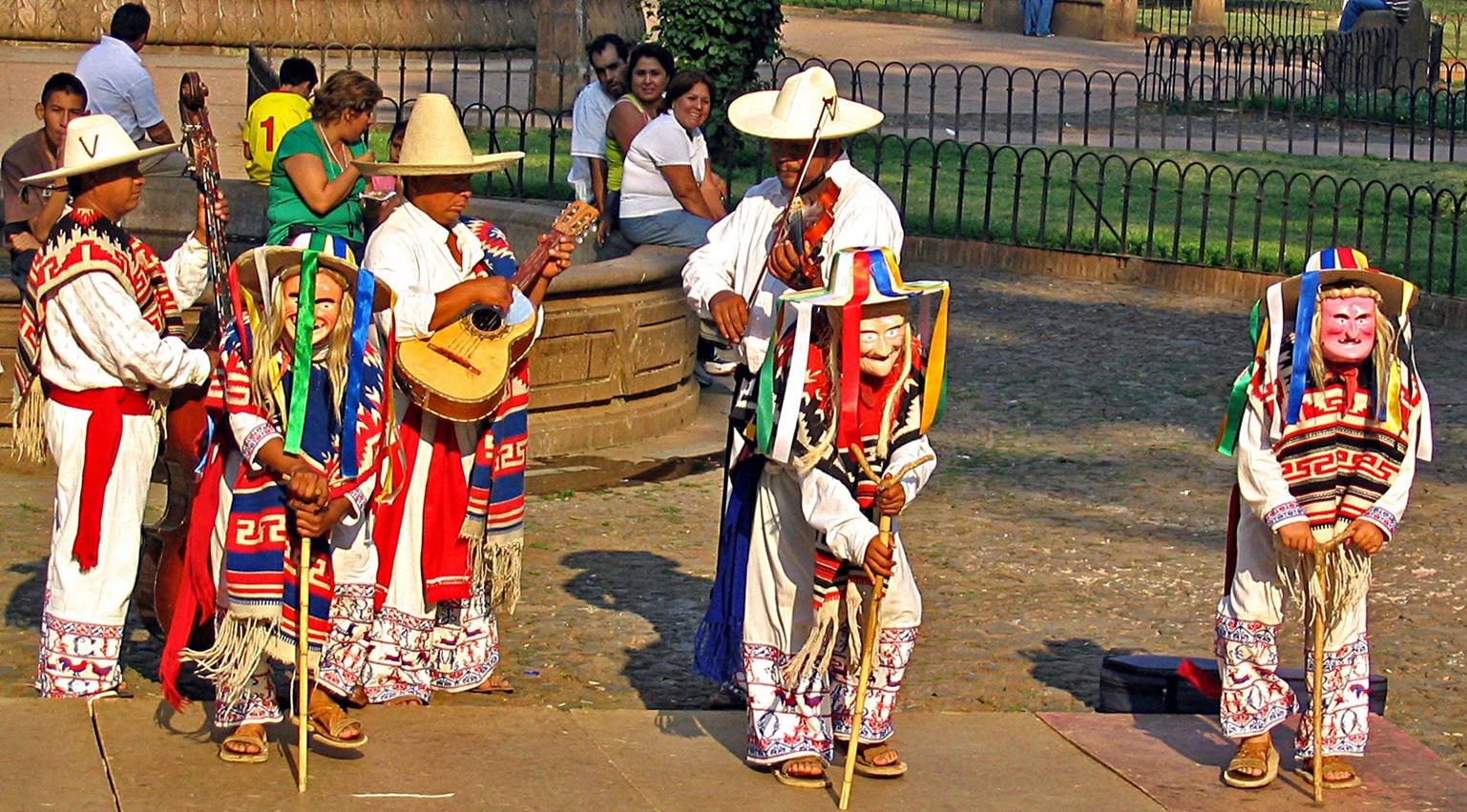
Religious
procession.
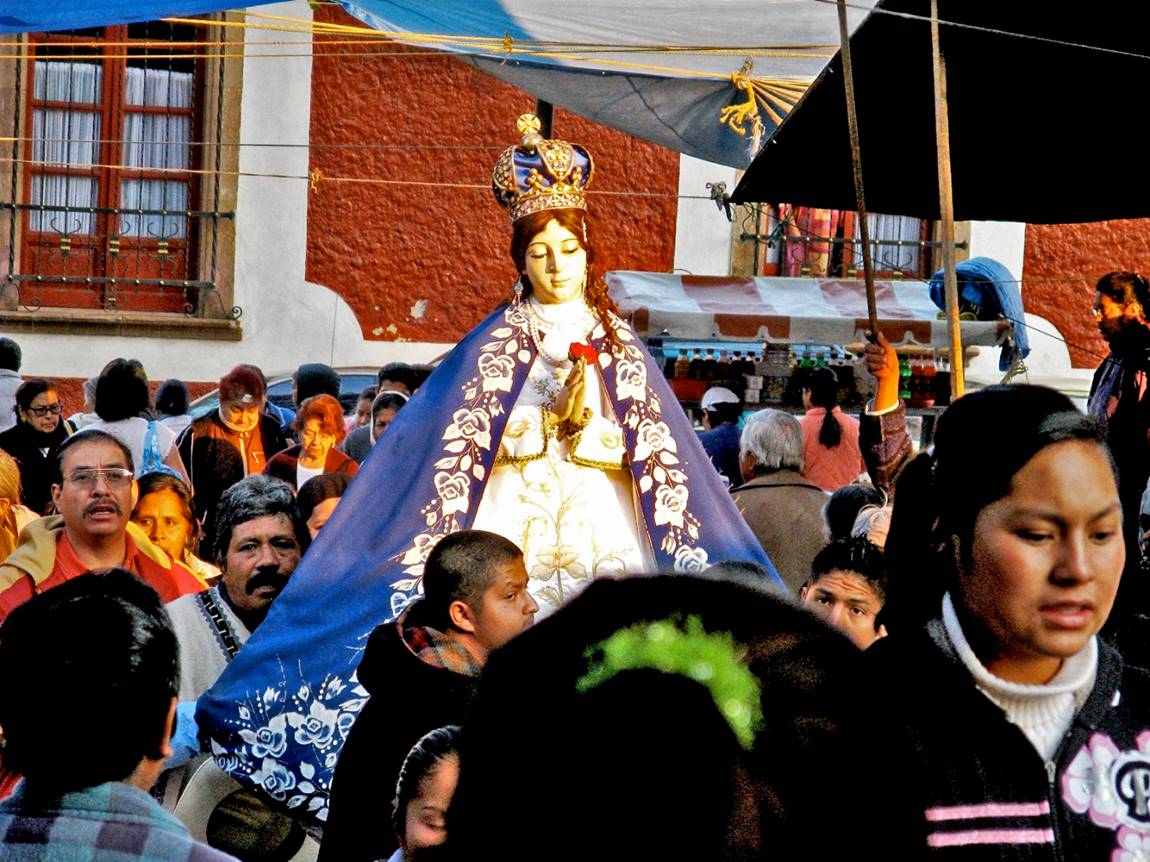
In a nearby
village.
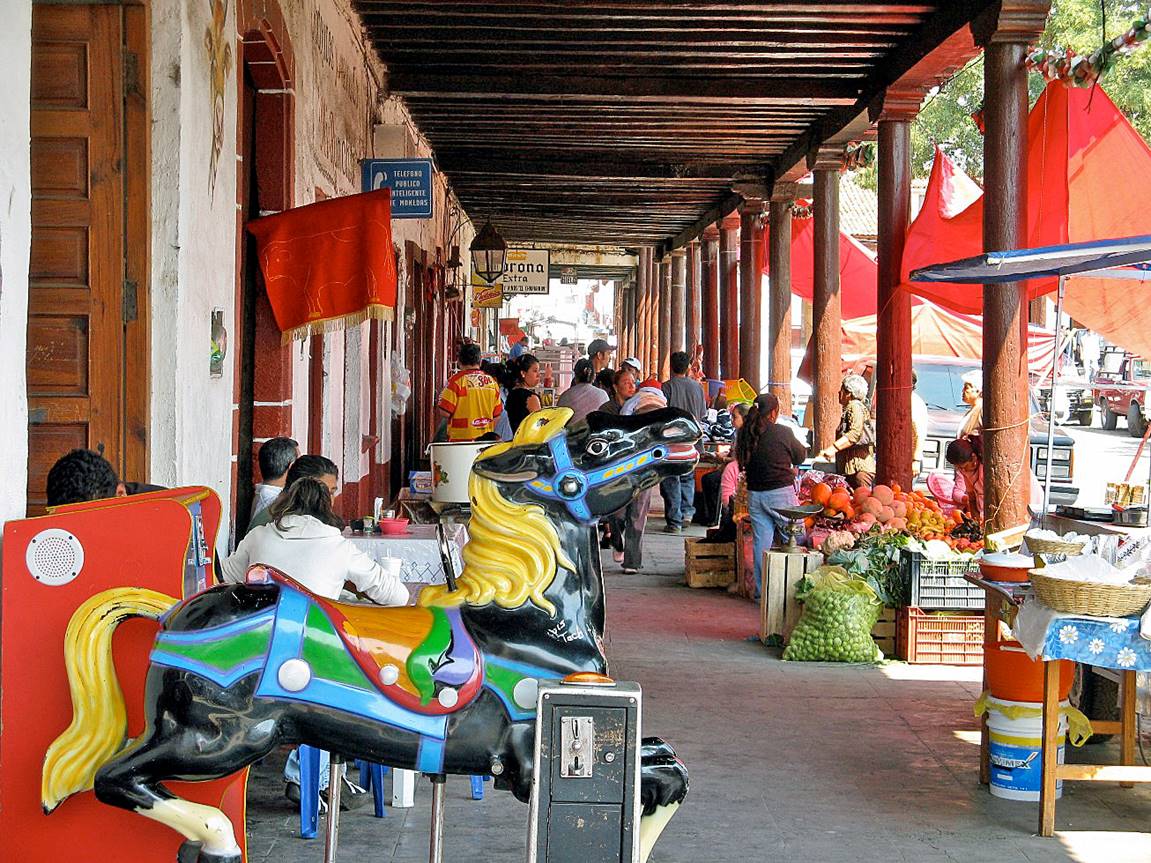
(2008) Tzintzuntzan (State of Michoacan):
Tzintzuntzan was the ceremonial center of the short-lived pre-columbian state of Tarascan (funded in the
14th century). It is built on a plateau overlooking the Patzcuaro
lake, 17km north of the town of Patzcuaro.
The site consists of five circular pyramids called yacatas.
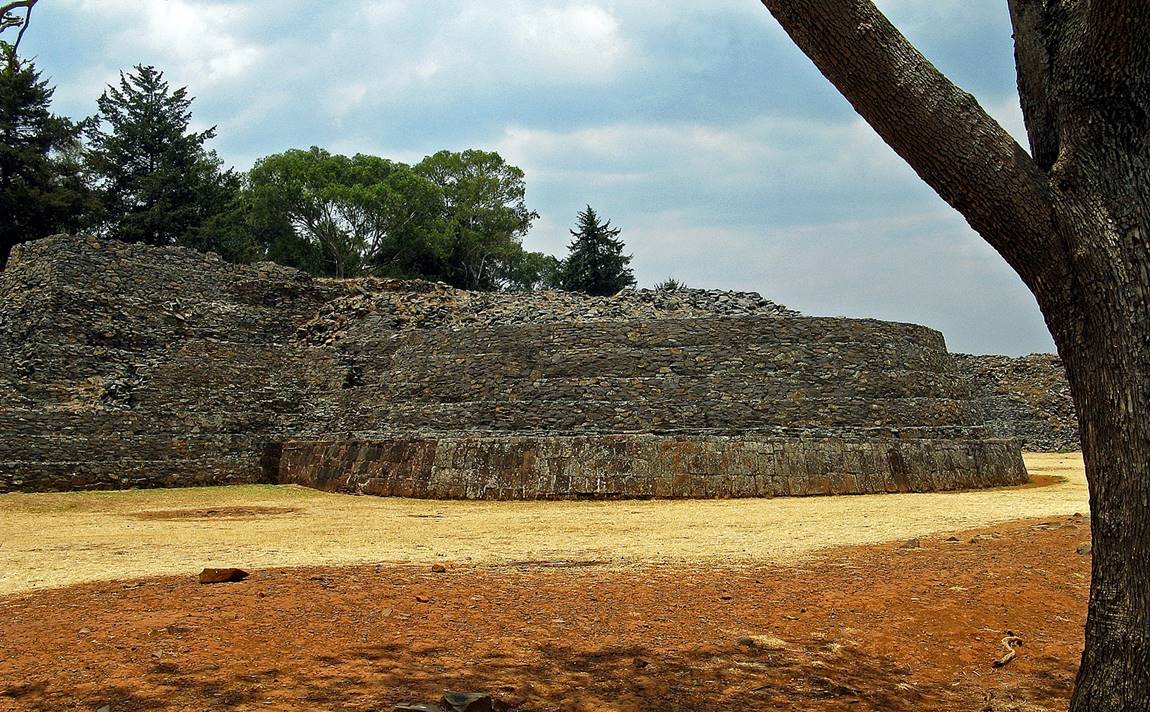
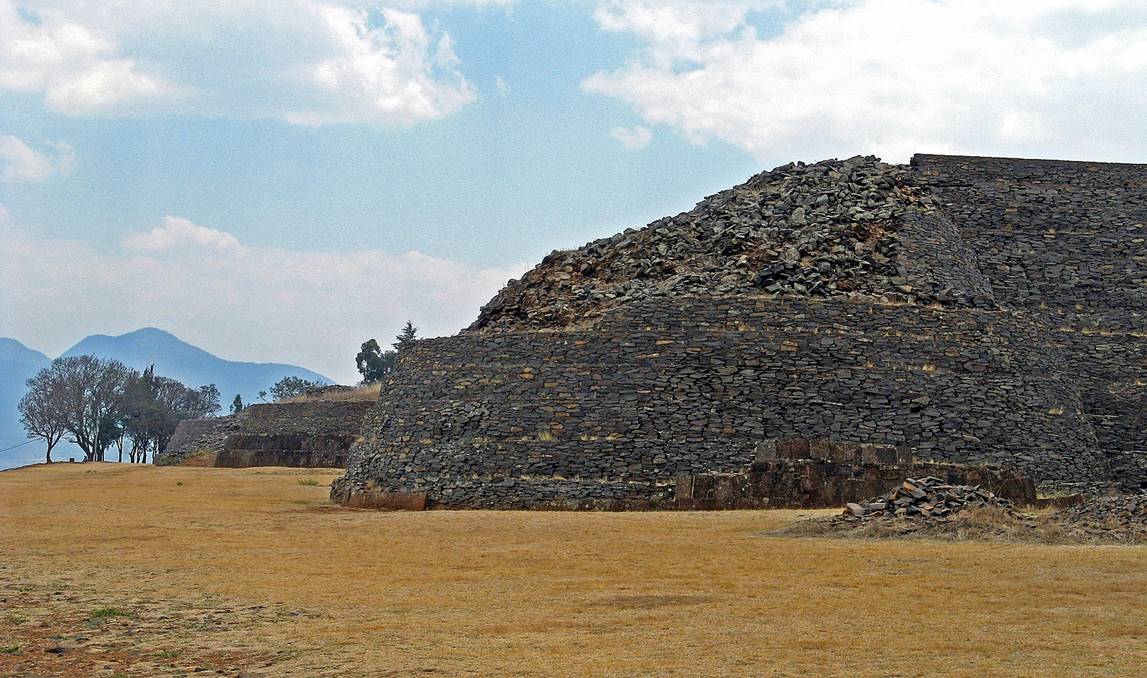
(2008) Morelia (State of Michoacan):
Morelia is the capital of the state of Michoacan.
Cathedral.
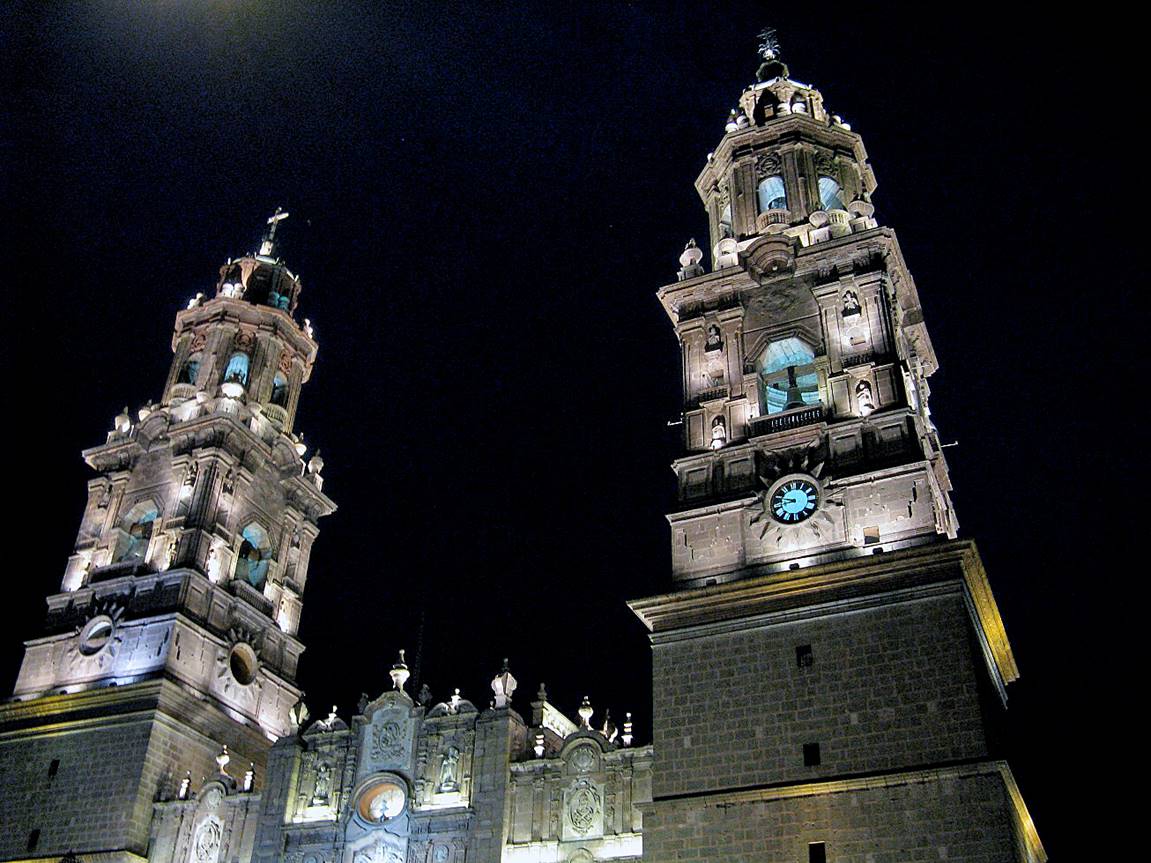
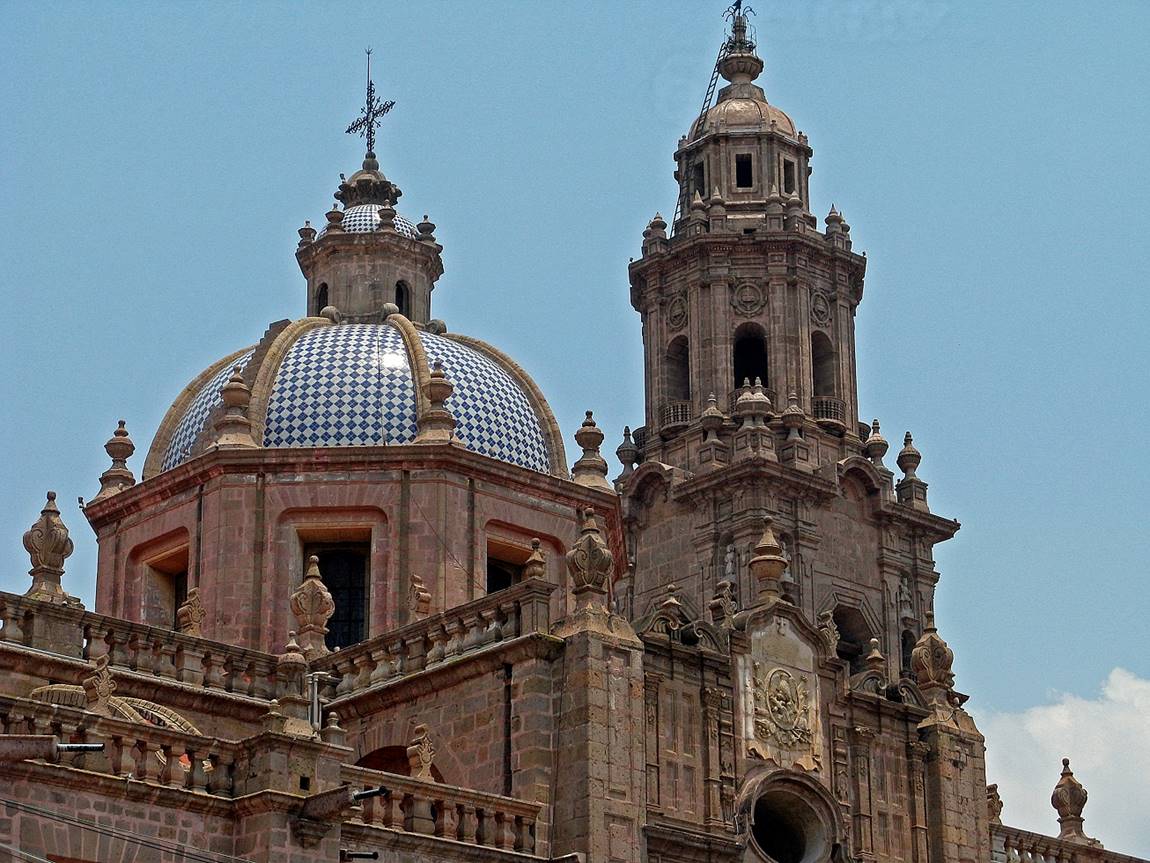
Templo de San Jose
(left) and balloon vendor (right).
|
|
|
Ex-Palacio
de Justicia de Michoacan: mural ″Morelos y la
Justicia″ painted in 1976 by
artist Agustin Cardenas Castro and patio.
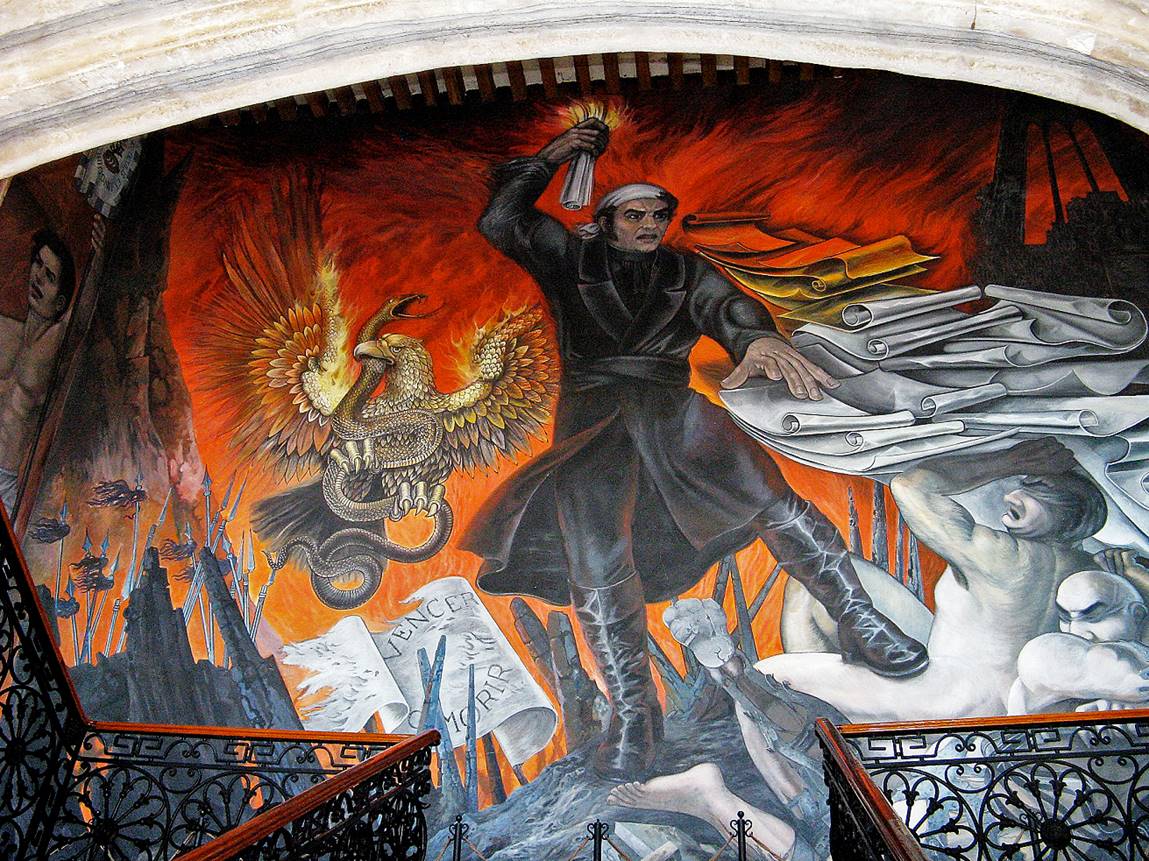
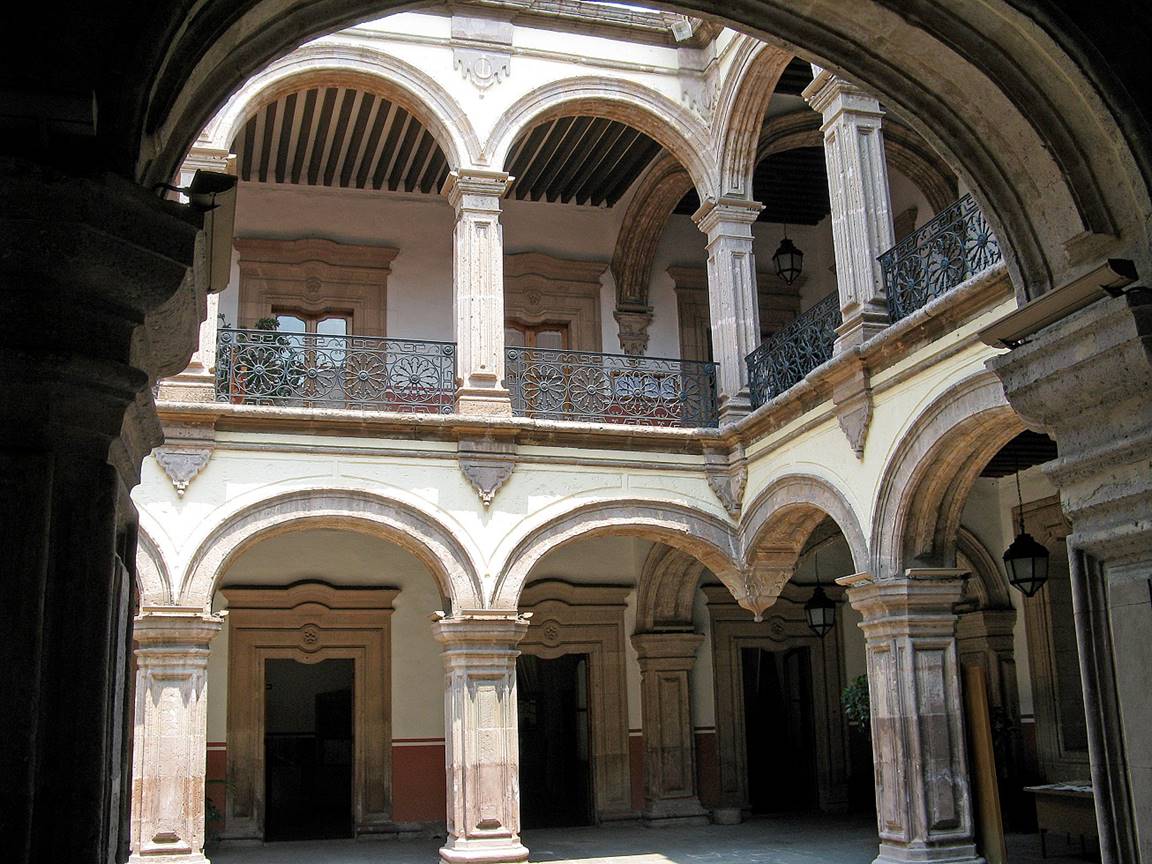
In the
Michoacan Palacio de Gobierno.
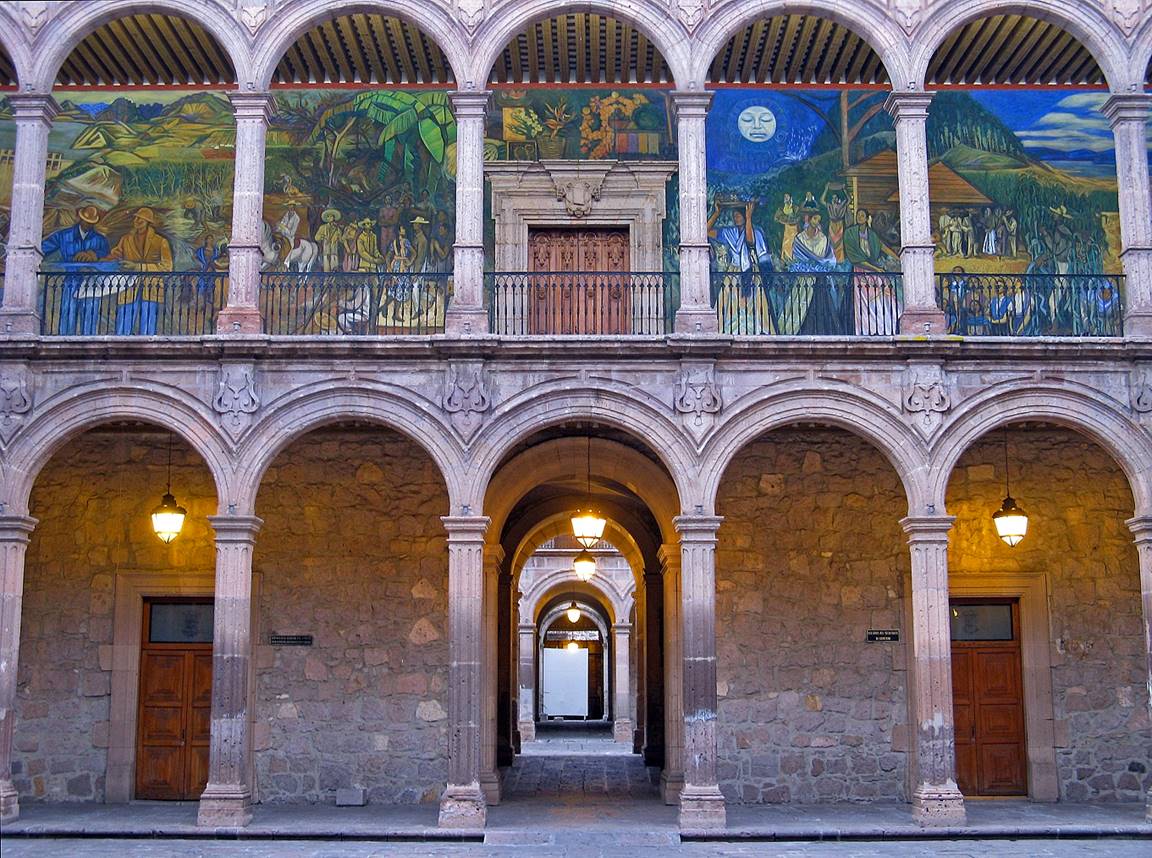
|
|
|
Beautiful colonial patio with fountain.
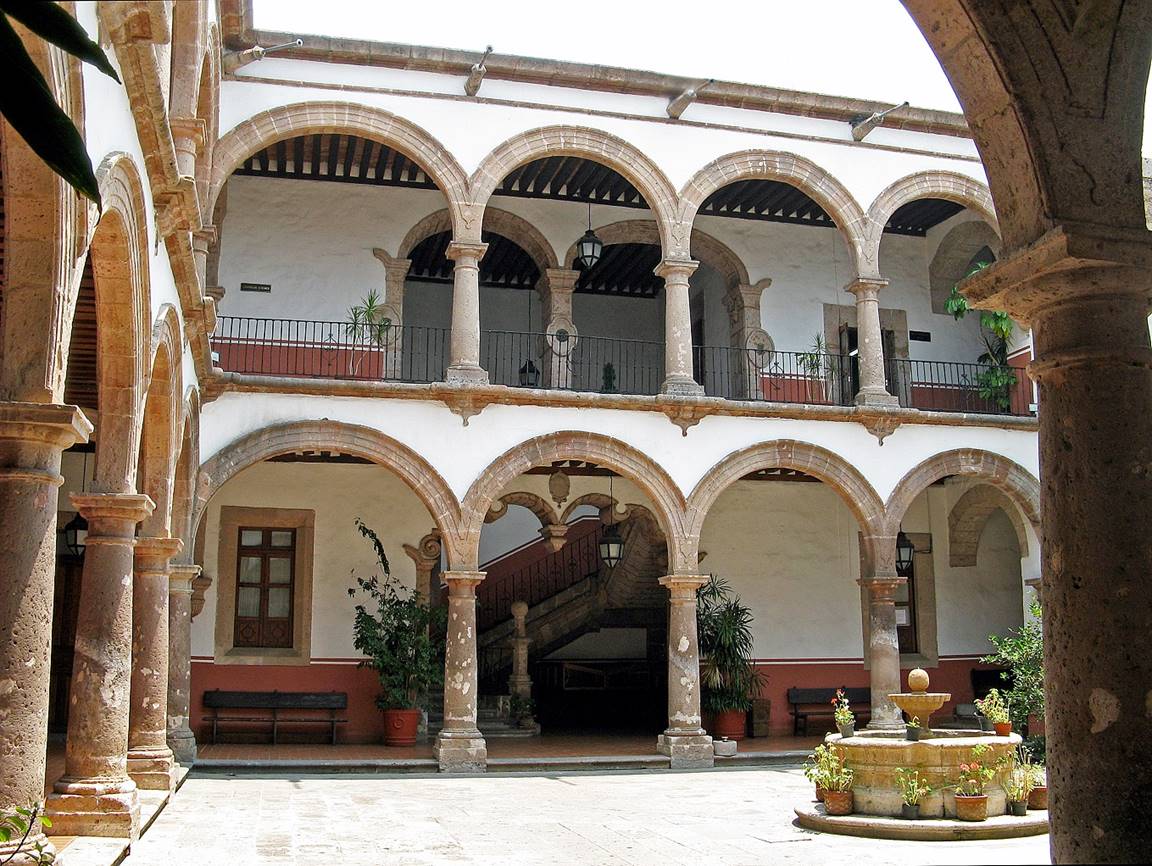
![]()








































